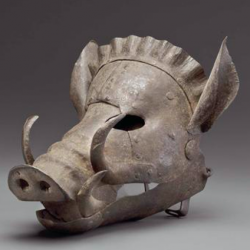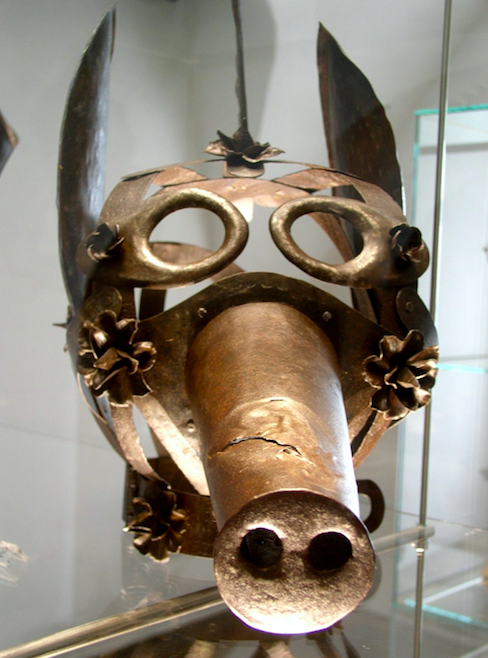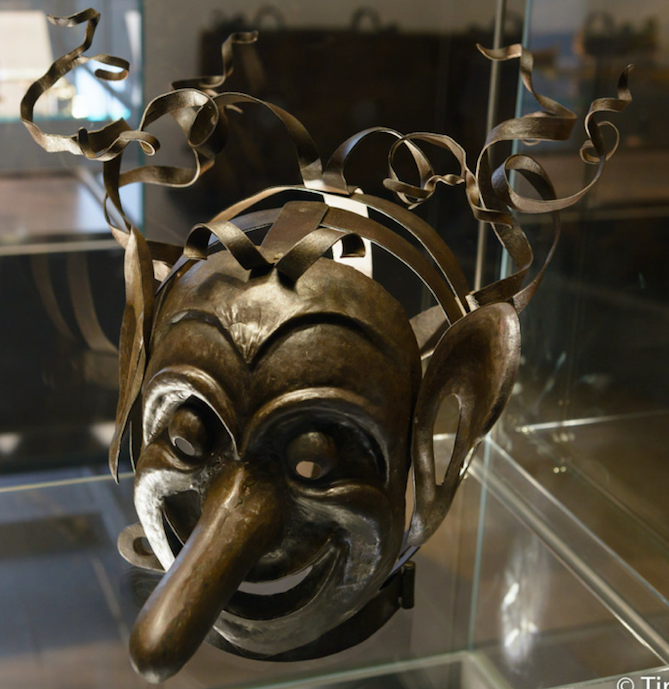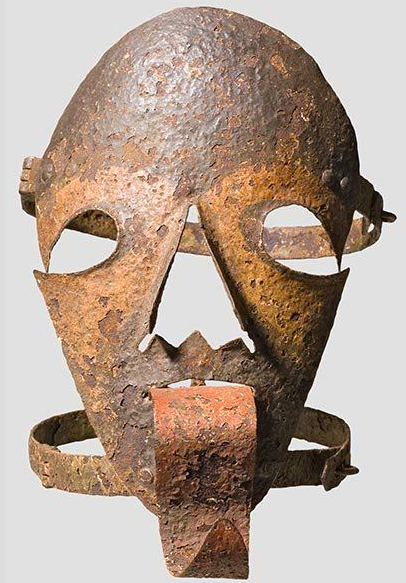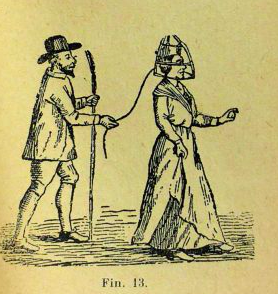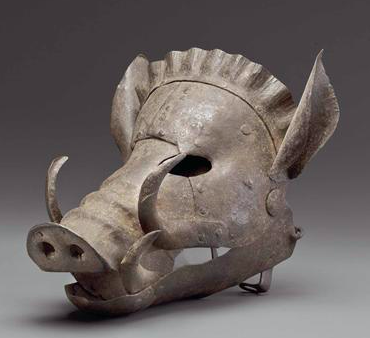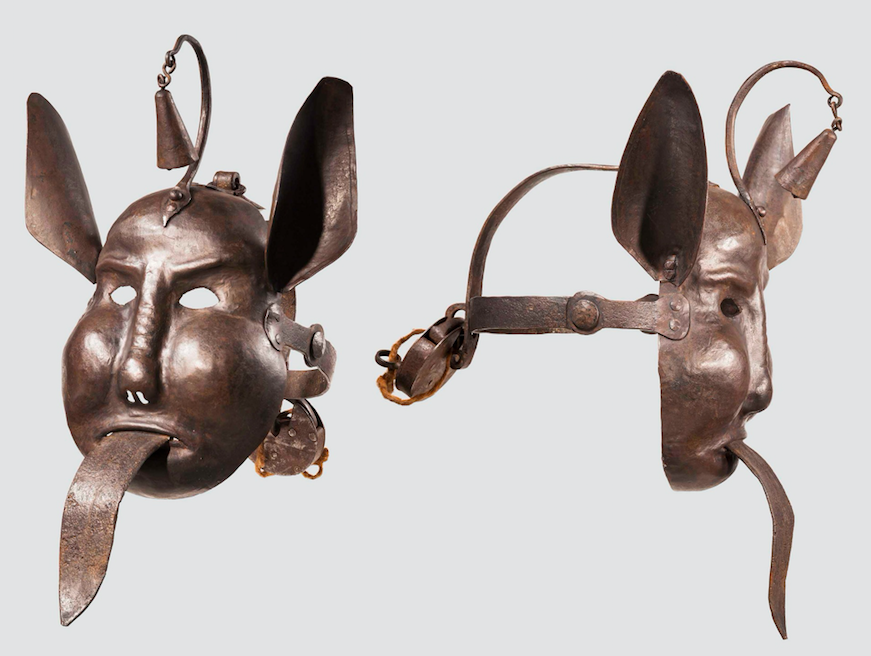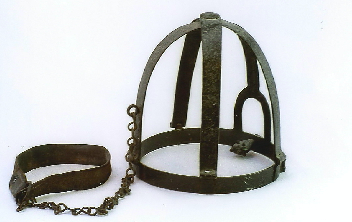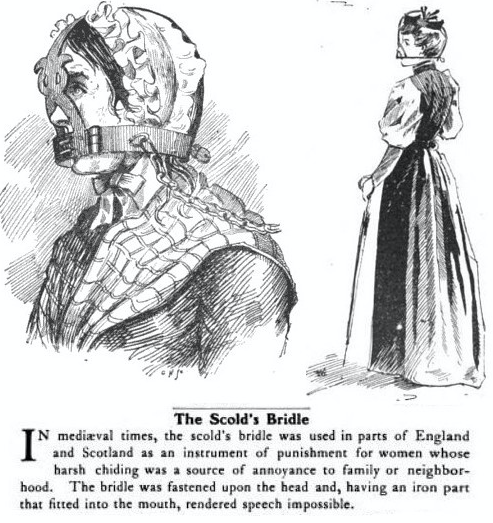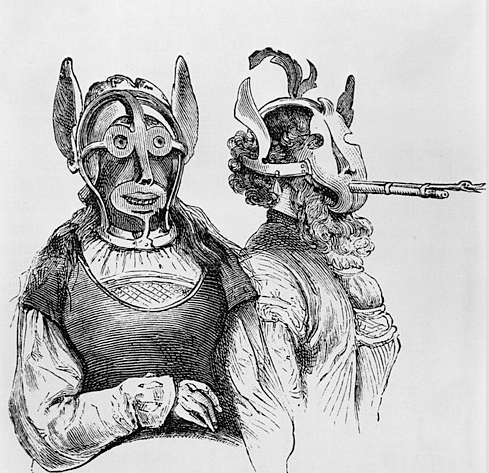Masks had become very important since the COVID-19 pandemic. This site introduces your to the culture of mask both historical and contemporary.
Historical Masked Criminals
Rarely does anyone ever see masked criminals being involved in murder, a mass heist or some other highly punishable form of activity. However, some have seen it in the past, within their own lifetimes or their ancestor’s lifetimes.
The KKK
The Ku Klux Klan, or the KKK, are depicted wearing their signature long white cloaks that stretch down to their feet, and pointy cone hoods with eye-holes cut out of them.


This group of people terrorized, tortured and lynched mainly African American and Black Americans since the mid-19th century. They usually carried out their attacks at night, so rather than dressing in black robes to signify the death of something, wearing all white might have lit up their existence or arrival to their victims or targets while enlightening their ultimate goal in the reestablishment of white supremacy through the use of Democratic victories according to the History Channel. They made this especially easy to do because they had members of the KKK in Congress, authorizing them legislative power over certain issues that favored them.
al-Qaeda (ISIS) & November 11, 2001
Another group that infamously terrorized others through the use of disguise and slipping through the cracks of the American airline security system were the Arabic terrorists, hijackers responsible for the attack on the Twin Towers or World Trade Center back on September 11, 2001.
According to passengers on the plane and in referencing official governmental documents from the FBI, the hijackers were affiliated with the terrorist organization named al-Qaeda. Affiliated with I.S.I.S. They wore red and white checkered headbands and bandanas and carried knives allowing them to force their way into the cockpits of U.S. airlines, eventually colliding with the towers in New York City.
While the color red could mean or affiliate with their terrorist organization, there might be other reasons behind their mask choices, or just an easy and convenient way to cover up their faces. Referring back to the COVID-19 pandemic, at the beginning citizens of each country would use what they had on hand to cover their faces; including bandanas and ski masks which are also linked to criminality. Convenience is a big factor when it comes to hiding your face, quickly.

The very common misconception after the attack on New York, as well as the Pentagon and other major governmental buildings, is that people who look like those depicted in the picture above are all linked to the same terrorist organization because they have the same appearance as them. If someone of that religious belief, region, ethnicity or nationality are wearing similar articles of clothing does not automatically affiliate with those who purposefully terrorized The United States of America.
If a woman is wearing a hijab, for example, does not mean that she is going to terrorize or harm someone or something. It is part of their religion and part of their identity. Again with the Semiotics of Identity, others may perceive how they want to perceive others with whom wear masks. But the wearer has an intention of their own, whether good, bad, normal, or part of their every day lives. For example, a child in a hospital with an autoimmune disorder has to live in a bubble with a mask on all the time. Her intention is to not get sick. Her intention is to keep others safe from her and her safe from others. She is not actively trying to commit a crime and shouldn’t be placed inside a stereotype because she has to wear a mask each day of her life. Maybe one day if she heals, she can take off the mask. The same goes for Arabic women once they are wed. But then again, it is within their choice to wear their hijab or not based on how strongly their religious beliefs, societal standings and marital position is within her own life.
But then again, there is good versus evil here just like in the comic books. While al-Qaeda (I.S.I.S) made an attempt to break the U.S., the men and women of the health and protection services (i.e. nurses, doctors, firefighters, policemen and policewomen, etc) were wearing their masks to aid New York in their time of need.
As hopeful as that last sentence sounded, the KKK and al-Qaeda caused a lot of harm during their times in the spotlight, yet no-one was able to damask or uncover immediately who they actually were; no-one proved their identities. By the time they escaped the clutches of the American government and its people, they would have already gotten away with what they wanted in the first place.
The Brink’s Robbery
Another real life event dealing with mask usage during a criminal moment in time was the infamous Brink’s Robbery in Boston, Massachusetts in 1950. According to information from official FBI records on their governmental website, the history of the Brink’s Robbery is considered the “perfect crime” due to each robber’s specific skill sets and their accomplishments in getting away for six years after the initial robbery.
With five to seven men entering 165 Prince Street on January 17, 1950, ultimately resulting in burlap sacks filled with $1.3 million dollars in cash and $1.5 million in checks, money orders and other securities. Overall, they made out with over two million dollars.
However, after those six years, O’Keefe finally confessed and gave up all the information on this successful mass heist. He gave up the premeditated plans, the blueprints for the bank, their disguises and the other men involved in creating this master plan for over two million dollars.
Six of this criminal gang including Baker, Costa, Geagan, Maffie, McGinnis, and Pino (who was the brain of the whole operation), were all arrested and held in lieu of bails for one-hundred thousand dollars a piece. O’Keefe and Gusciora were already in prison for other charges against them and Banfield had passed away. Two other robbers, Faherty and Richardson, fled to avoid apprehension and were placed on the “Ten Most Wanted Fugitives” list which was an impressive list to gain access to. However, their runaway plan only lasted a few months. The FBI found them in an apartment in Massachusetts, which was dumb of them to stay in the same place they stole millions of dollars from. But that’s just a personal opinion.
After everyone involved was put behind bars and placed in a courtroom, finally on October 9, 1956, the jury slammed down his gavel and exclaimed all were guilty of the Brink’s Robbery. The eight men remaining had received life sentences for robbery, two year sentences for conspiracy to steal, and sentences of eight to ten years for breaking and entering at night.
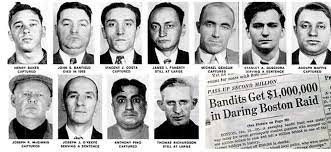
However, McGinnis who was not at the scene of the crime that night, received a life sentence on each of the eight indictments which charged him with being an accessory before the fact in connection with the Brink’s Robbery.
After everyone had been convicted, after years of running and hiding from the laws in which they broke under their hidden faces in the dead of night, they money that they stole had been dispersed by others in other states such as Baltimore. Counterfit money had also been printed off of what they had stolen in the first place. But it is a mystery to this day where the rest of that two million dollars is. The majority of it had not been recovered since they had all been convicted.
So the main question is, where is the money? Do you think it’s still around today? I can honestly imagine some sort of booty for criminals looking to cause some trouble.
As for the actual fashion aspect of the Brink’s Robber’s disguise and mask usage. All robbers,
“Wore Navy-type peacoat, gloves and chauffeur’s caps. Each robber’s face was concealed behind a Halloween type mask. To muffle their footsteps, one of the gang wore crepe-soled shoes, and others wore rubbers.”
The FBI
The robbers were also given pistols before entering the bank. Not only were the masks useful in the way that they protected their identities, but they were also used in a manner that benefited them in the stealthiness of their operation. I guess you could also consider the dark of night being another form of mask usage and stealth; they covered themselves pretty impressively. The Halloween-type mask depicted below is supposedly that of Captain Marvel from the Marvel Universe; from older comic book versions of the character. Personally, I see more of DC’s version of Wonder Woman from the older comic books, but I guess people can visualize this mask as a different character either way.
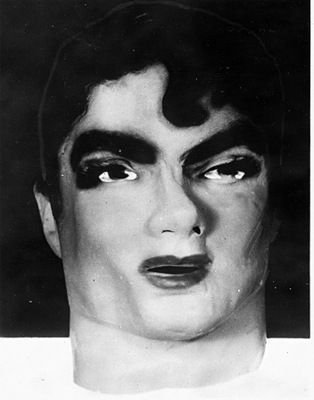
This sort of cheap, rubber material used in Halloween masks have been depicted and used in several movies and television shows as depicted above. Halloween-type masks, in general, have been seen disguising villains and real life criminals because it’s what’s available to them without looking or seeming suspicious. Who knows, maybe they could have been going to a costume party! But even then, masks from the horror movies are terrifying, so the threat of someone holding you at gun or knifepoint and restraining you while wearing a creepy mask like this to protect them from their identities is still horrifying.
Oh! Remember how ideas have to come from somewhere mentioned in my previous blog post titled, Familiar Masked Creatures? Well, the Brink’s Robbery in 1950 inspired director William Friedkin to make a movie based on the events that took place on January 7, 1950 in Boston Massachusetts. The movie was released on December 8, 1978; based on the real events of this infamous, perfect crime.

The Wrap Up
In the past, previous countries have made an effort or spoken of banning the use of masks for criminality prevention. The criminalization of the Burkina in France, for instance, gave them cause to argue,
“That burins should not be worn because of public security reasons legitimacy, for the same line of logic should outlaw any article of clothing that hinders proper identification.”
Jung, 2016
Which makes sense in terms of criminality, crime rates, and mask usage. If someone is covering up their face not due to specific and understandable reasoning, such as medical or employment excuses, then why are they even wearing one in the first place?
Profiling someone based on the types of accessories and clothing is one thing when it comes to judging someone on the street, but it’s easier to do so for people who have no reason to wear things that mask their identity. It is suspicious and uncauseworthy.
However, those who want to wear a mask or any article of clothing they want, they can. They have the free will do do as they please, and even if they’re told not to do something, do you really believe criminals who cannot follow society’s laws, will follow not wearing a mask to cover up their identities? Very unlikely.
References:
Jung, C. (2016). CRIMINALIZATION OF THE BURKINI. Harvard International Review, 38(1), 6-7. Retrieved April 16, 2021, from http://www.jstor.org/stable/26445655
Pollock, D. (1995). Masks and the Semiotics of Identity. The Journal of the Royal Anthropological Institute, 1(3), 581-597. doi:10.2307/3034576
Sources:
- https://www.history.com/topics/reconstruction/ku-klux-klan
- https://www.fbi.gov/history/famous-cases/brinks-robbery
- https://www.wcvb.com/article/historical-photos-boston-s-great-brinks-robbery/8118545
- https://jamestown.org/program/al-qaeda-in-iraq-operations-suggest-rising-confidence-ahead-of-u-s-military-withdrawl/
- https://www.theguardian.com/world/2018/mar/05/ku-klux-klan-kkk-media-debate
- https://wikipedia.com
- https://www.wnyheritage.org/content/buffalo_takes_on_the_ku_klux_klan/index.html
- https://www.flyingtigerantiques.com/1920s-ku-klux-klan-member-photo-from-buffalo-ny-area.html
Familiar Masked Creatures
As far as small investigations linked around criminal ghosts within crowds of normal people just following state and national guidelines against COVID-19, masks and criminality are mostly linked to comic books and fictional elements within film and television industries. Most notably movies like Deadpool, V for Vendetta, Friday the 13th (Jason), Halloween (Michael Myers) and television shows such as Money Heist on Netflix.

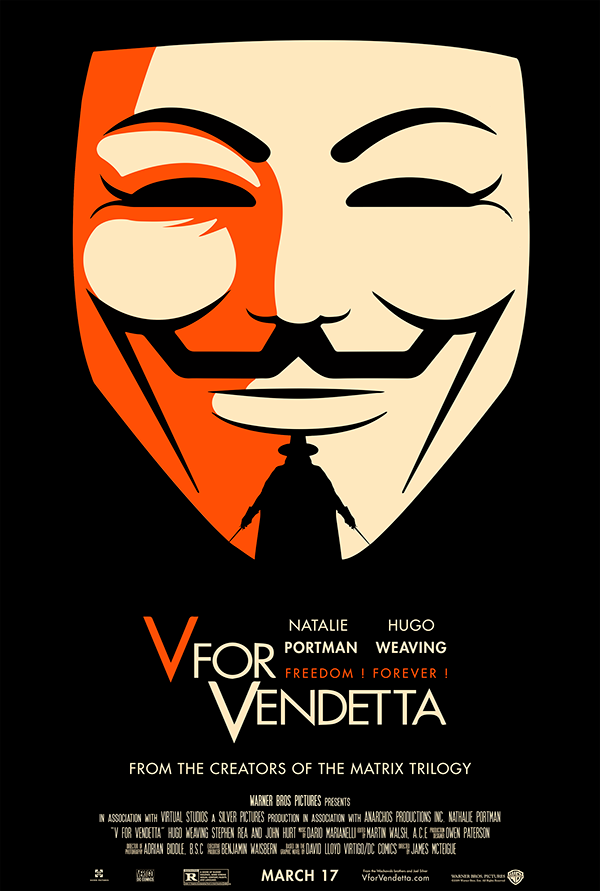


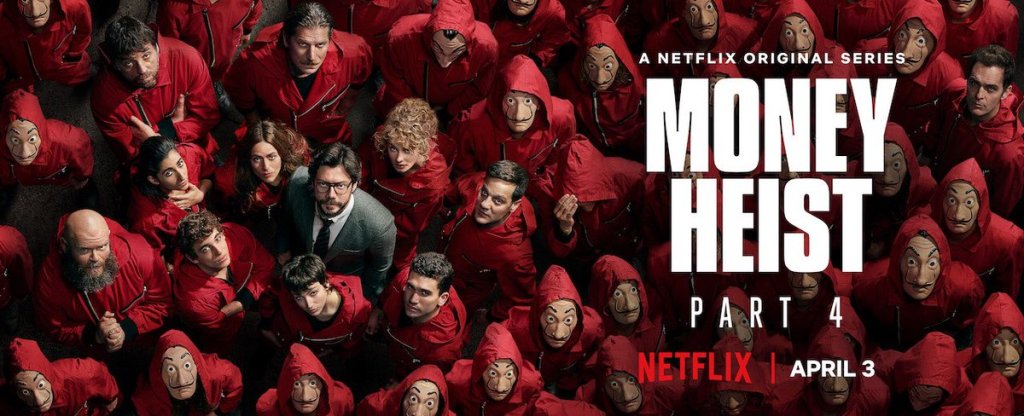
The above movies and television shows are mostly based on fictional elements meant to entertain specific audiences, inspiration of mask usage spans not only within criminal interest and protecting their identities, but fandoms that interact with conventions such as cosplay. Also, masks that form out of movies such as these make for great Halloween costumes. Children might wear them on October 31 to run around neighborhoods and receive candy from their neighbors. Teenagers might mess around and tp and egg houses and terrorize little kids in Jason and Michael Myers masks. I’m only giving these examples because I’ve seen it happen.
Usually, these movies or any movie or television show that depicts a form of disguise or mask is turned into a product in which others will wear on occasions that are most appropriate. For Halloween as their favorite character, for a themed party, or for committing a crime without seeming suspicious when purchasing one of these mass produced, movie or television based mask in a department store.
The reality of these fictional and made up stories have to originate from somewhere. Most fictional elements are based on real events.
“Superhero comics, like so many other genres of popular culture may not depict the real world, but they do mediate it; that is, they respond to, comment on, the world around us.”
Stromberg, 2011
In Spider-Man Homecoming released in 2017, starring Tom Holland, one of the beginning scenes depict four robbers with plastic masks the four Avengers: Iron Man, Captain America, Hulk, and Thor. Of course, the fictional element within this scene is the outer space technology they received from the first Avenger’s movie released back in 2012. However, this scene might as well depict how some robbers disguise themselves in real life.

Sources:
Stromberg, F. (2011). “Yo, rag-head!”: Arab and Muslim Superheroes in American Comic Books after 9/11. Amerikastudien / American Studies, 56(4), 573-601. Retrieved April 15, 2021, from http://www.jstor.org/stable/23509430
https://marvelcinematicuniverse.fandom.com/wiki/Criminal_Avengers
Relating to COVID-19, Masks and Criminality
Heres to the heroes of the Coronavirus pandemic. Thank you to all the nurses, doctors, police officers, military personnel, firefighters, etc on aiding the world in this global, ongoing catastrophe.
On New Year’s Eve, 2019, I had the feeling that 2020 would be great. Just like every New Year felt. But more sentimental in the fact that my childhood was over. The decade I grew up in had ended and 2020 felt like a fresh start to my new adult life, in my 20s. I guess you could say it was the best of times and it was the worst of times, because it actualy was. There was an equal amount of good and bad that happened in 2020, and honestly, it helped me grow as a person.
Although the Coronavirus started in 2019, hence COVID-19, it really put the gas petal to the floor when 2020 rolled around. As mentioned previously, quarantine felt like an eternity, the economy had been destabilized, family and friends were separated for everyone’s health and well-being, schools, work, and business were all closed, there were travel restrictions and so on. 2020 felt like a crazy rollercoaster of new guidelines, COVID tests, and the uncertainty that society would go back to “normal”. But as much as we’d all like to be out of this mess, we’re still in it.
When we all had to start wearing masks towards the end of March and beginning of April of 2020, different people reacted in different ways. Different beliefs within different groups of people and within individuals divided us even more so than we already were; as a society. However, we all had to wear masks for the safety of others. There are so many different varieties of masks such as disposable medical masks, cloth masks, paint and ski masks, N95 respirators that healthcare workers use, and face shields for example.
Nurses and Firefighters, for example, wear a form of facial covering to protect themselves from sickness, disease and smoke and smog within their daily lives. Just as criminals might wear masks to protect themselves and their identities from the law.
According to a scholarly source based on the Masks and Semiotics of Identity,
“The ways in which masks take up the conventional means is throughout how identity is displayed or hidden.”
Pollock, 1995
However, displaying mask wear-age is up to the wearer; their intentions are their own. In the end, nurses present their mask wear-age as a sign of aid and health. Firefighters present their masks as a sign of aid and public service. Criminals who rob a bank with a mask on, present themselves as hiding their identities and breaking the law.
On May 18, 2020, Don Babwin and Stefanie Dazio from WUSA9 News reported William Rosario Lopez on holding a cashier at gunpoint in a convenient store in Connecticut. I know this may sound very stereotypical, but these types of situations aren’t uncommon. Even before the pandemic. But according to police chief of Frackville in Pennsylvania,
“Criminals, they’re smart and this is a perfect opportunity for them to conceal themselves and fit right in.”
Richard Bell, Chief of Police in Frackville, PA
With the coronavirus mandating masks with businesses requiring masks to enter not only protects those from others in this weird point in time, but also gives masked criminals the perfect opportunity to blend in and do whatever they want without being completely recognized. That’s just the gist of it.
Sources:
Babwin, D., Dazio, S. (2020). Coronavirus masks a boon for crooks who hide their faces. WUSA9 News.
Pollock, D. (1995). Masks and the Semiotics of Identity. The Journal of the Royal Anthropological Institute, 1(3), 581-597. doi:10.2037/3034576
Auto-Ethnography
From a first person point of view, blogger Ellie Haak, will first discuss her experience of the beginning (to present) of COVID-19, her mask usage, and finally into Masks & Criminality.
On March 11, 2020, everything started changing. It started off as any other normal spring day at college; sunny and warm. I had woken up, grabbed my phone and started scrolling though my media platforms, like I do every morning. I checked the news which covered so e new virus that had infected some people in different parts of the world. Then I checked Snapchat and sent a couple of messages to the boy I was talking to. We had plans to go on a date. I put my phone away, rolled out of bed with my messy bun and baggy pajamas.
I strolled out of my residence hall down the paved walkways to grab a blueberry, peach, mango smoothie and proceeded to head to my communication class in one of the older buildings on campus. After meeting with my classmates for an in class assignment, the professor carried on with the lecture. Until everyone’s phones started ringing and buzzing at the same time. Looking from above, this scene could be compared to something you see in an apocalyptic movie. We all checked our phones and quiet murmurs began around the room. Out of the blue, the Governor of New York had tweeted,
“Starting March 19, @CUNY and @SUNY will move to a distance learning model for the rest of the semester. This will help us reduce the speed of the virus #COVID19.”
Andrew Cuomo, March 11, 2020
This meant that all students of the SUNY and CUNY system were cutting their semesters short and going home. Shortly after class had ended, I had rushed back to my dormitory. Several emails were sent out by the college’s administration board claiming their unknowingness of this statement provided by Governor Cuomo and their next steps that were being determined.
My friends and I screamed at the top of our lungs from the lack of information our college administration had given us, the confusion of what we contemplated on doing next, and the stress from the schoolwork backing our uncontrollable problem. But we weren’t the only ones. This unpredicted tweet meant the entire SUNY and CUNY system, so everyone else attending a state school were most likely feeling the same things.
I called my parents crying over the phone and I remember my father telling me,
“It’s going to get a lot worse before it gets better. So, pack everything up.”
Tim Haak, May 11, 2020
The last week we were all there, was a blur. Fraternities and Sororities crossed their new chapters in earlier than expected, the general student population partied the entire weekend, and packed up all their belongings a mere three days before moving out completely. We said goodbye to our sophomore year freedoms and said hello to a ton of news coverage, CDC guidelines, speeches from [former] President Donald Trump, and new rules society had to follow in order to protect themselves and others from COVID-19.
It’s hard to recall 2020 since it flew by so quickly, although quarantine made it feel like an eternity. Even though I had the luxury to stay home with my dog, do my homework in a queen sized bed instead of an extra-long twin, and got to binge watch Outer Banks on Netflix while sipping on my whipped iced coffee, it was still a hard transition.
Everything was closed, travel was put on pause, nobody attended work or school, stimulus checks were handed out to stimulate the economy, and updates regarding the pandemic were daily on each news and media platform. There was nowhere on the internet, within word of mouth, or one’s own thoughts that were not COVID related. It reprogrammed our society. But when the world reopened its doors to let in some fresh air, there were guidelines that followed behind.
On April 3, 2020, the Center for Disease Control and Prevention (CDC) recommended mask wear age and a six-foot social distancing guideline to the global population. At that point, most people had taken three sides…
1. Those who immediately obeyed to the mask mandate
2. Those who did not want to wear masks and brought up their [American] Rights
3. Those who didn’t care, but wore a mask anyway
To protect myself and others, I followed the recommendation and eventually most of the population also caught on as well. Although there are still some stragglers that still refuse to wear masks today, even though it’s been a year later. I’ll get into that later.
I wore a mask in public when I was around others outside my immediate household. That included my friends, my co-workers and bosses, and distant family members I don’t see quite often. I didn’t take my mask off unless I was by myself in a closed space, far enough away from others, or if I was around someone who felt comfortable without masks being worn.
Towards the beginning of the mask mandate, I would social distance from my family members outside of my mom, my dad, and my younger sister, but that broke almost immediately since I am around them all the time anyways; they feel the same way.
One of the first masks I was was from one of my college friend’s mom. Her mom made homemade cloth masks from cotton fabrics she had purchased from Michael’s before the pandemic. She made them from whatever she had on hand. Tina (my friends mom) sewed in elastic bands through the fabric to stretch around the ears to stay in place. I tied mine because they were a little loose. Her masks resembled medical masks with pleats and a small opening to place another layer inside for extra protection. They came in a variety of colors and patterned fabrics. Tina instructed her customers to wash before wearing because, at that point in time, we didn’t know how contractible the virus was.
Unfortunately, I have lost contact with Tina’s daughter because of pandemic guidelines and keeping everyone safe. That’s another thing about this forever pandemic, even though this is a little off track. So many have lost precious connections within their social circles. Remember that boy I was talking to before Governor Cuomo sent out the tweet back on March 11, 2020? We had planned on going ice skating and out to dinner in Rochester, but that quickly got canceled. If anything, it postponed our first date until the middle of July. He’s my boyfriend now, but I guess I’m luckier than most.
My five year old cousin, Allie, attended preschool before the pandemic, made new friends and even had her first boyfriend! Then after schools were closed, and kids were kept in side for at home, distanced, online learning, she came up to me one Saturday morning at my Grandparent’s house sobbing and said,
“I want to back to school! I miss my friends!”
Allie, Age 5
It’s heartbreaking to see that, at such a young age, kids do not have the proper connections most did growing up. It makes a lot of sense how schools closed for everyone’s safety and well-being, but there’s nothing saying that everyone’s well-being is better than it was before the COVID-19 pandemic.
Also with kids, its hard to make social connections and putting names to faces when half of someone’s face is covered up. For me, at least, It’s difficult remembering names and faces. COVID stepped that problem up a bit. Relating back to Mask & Criminality, I guess because everyone else is wearing a mask and following COVID-19 guidelines, criminals who wore masks in the past are more likely to be overlooked because everyone is wearing them now.
There are so many different varieties of masks. But for me, I personally wear themed cloth masks from Wegmans’ grocery stores. They fit closely to my face, comfortably sit on my nose, and stretch from my chin with a seam crease down the center. Since I live in Buffalo, NY, they have a little buffalo mark on the side of the mask with holidays to match:
-Christmas
-Thanksgiving
-Valentine’s Day
-St. Patrick’s Day
-Bill’s Mafia
Wegmans also sells them in solid colors or the died colors, restocked and rotated every month, that I’ve noticed. These represent the Buffalove Collection that all Buffalonians know (and love). These masks come in an adult and children sizes. Before COVID, you would not be able to find them because they were made when the pandemic hit. I like to wear them because they’re pretty, they match my outfits, they’re easy to wear and the styles are fun. Not to mention they show where I’m from. I’m almost positive that Wegmans sells the same masks at all their other stores, but with different imprints on them such as Buffalo, Rochester, and so on.
I also work at a popular donut shop in Upstate New York. I work long hour days most of the time, so instead of potentially getting sugar, powder and frosting all over my nice cloth masks, I wear the provided disposable masks to cover me while I’m at work. Since the disposable masks are light and comfortable, hotter temperatures by a frier or under the summer sun is easily withstand-able. They keep to your face more closely with the small, bendable metal band where it bends over the nose. They are usually blue in color, but I’ve seen them that also come in green, pink, purple, and yellow.
Mask wear age was annoying at the beginning of 2020 when the CDC recommended them and when you needed to take one with you everywhere you went. They gave me acne when I had to wear them over the long, hot, summer days at work. Like I said, COVID altered the way society functions and thinks. I can’t tell you how many times I’ve tried to walk inside a store and forgot my mask. But this past winter, they were helpful with not only keeping everyone safe, but it kept my face warm from those nippy, negative temperatures New York tends to have.
But, like I said previously, not everyone complies with the mask mandate which shocks me to this day. It’s been over a year since the coronavirus walked to center stage, and just because you don’t feel comfortable wearing a mask, have freedoms, or are just stubborn, doesn’t mean you shouldn’t. For the sake of you and everyone else’s health and safety.
If I have learned anything from this continuous global pandemic and mask wear age is people’s significance in following the rules. We were taught wince we were young that following the rules is a good thing, and when they need to be broken, to do so in a manner that won’t harm anyone else. Not wearing a mask potentially harms others and puts them at risk of contracting the virus. If we all just wear masks and persevere through this pandemic, for however long it takes, we’ll protect ourselves and our loved ones in the long run. Those who wear their masks are the superheroes and those who don’t are the villains/criminals keeping this global pandemic going.
Medical Masks of the 20th Century
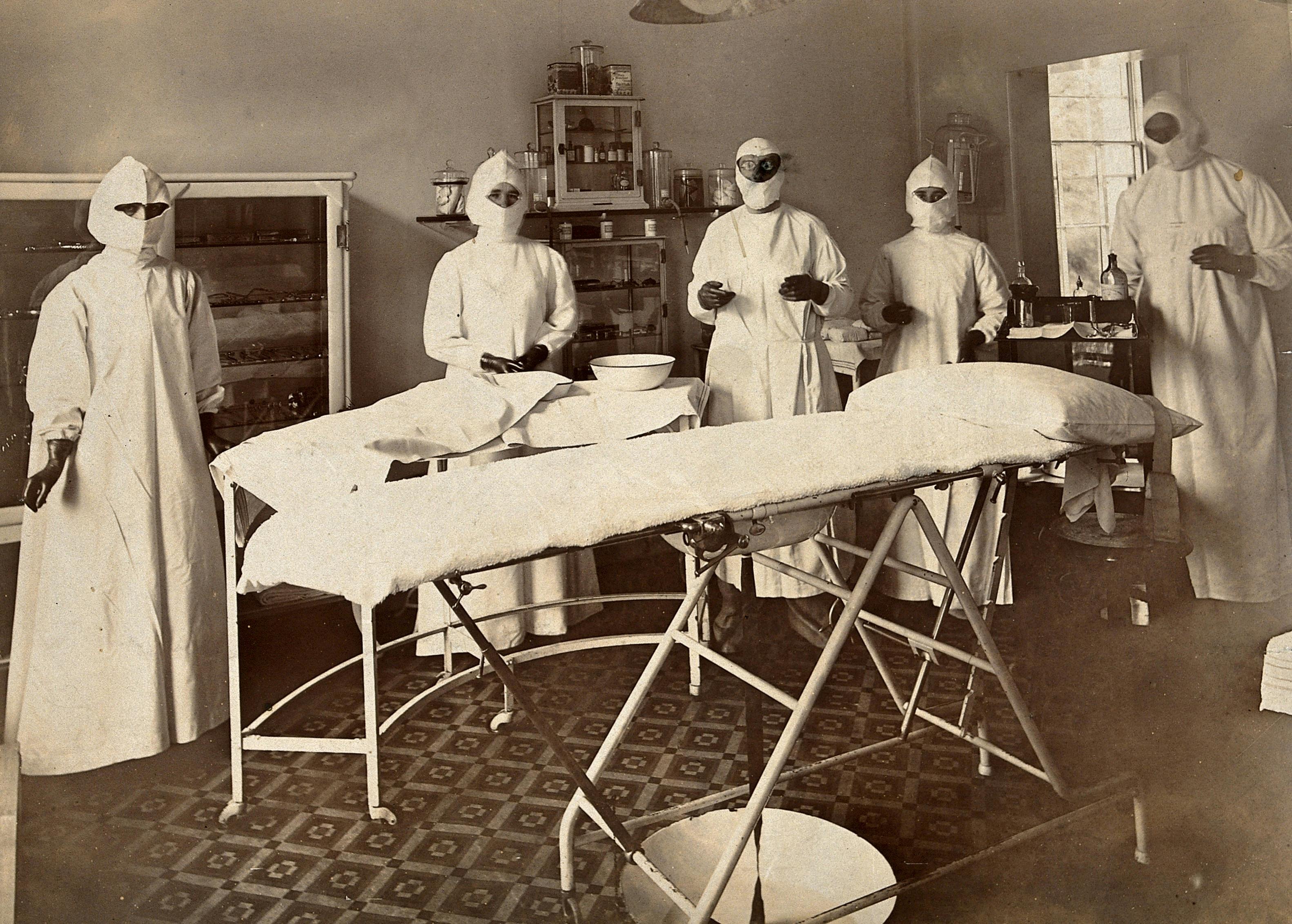
While researching the subject of medical masks during the 20th century compared to the overall history of face masks since its inception, masks reflected the development of progressive scientific thinking during the century. The scientific ideas that were developed leading up to the 20th century profoundly impacted history and culture during the 20th century. After the influenza pandemic in 1918, further research and progress were made to elaborate face masks. In 1937, there was a movement for healthcare workers to wear face masks in surgical rooms, especially having the front cover the nose. This particular scientific reasoning and communication to the public were among many breakthroughs that we can see in the scientific community in the 20th century.
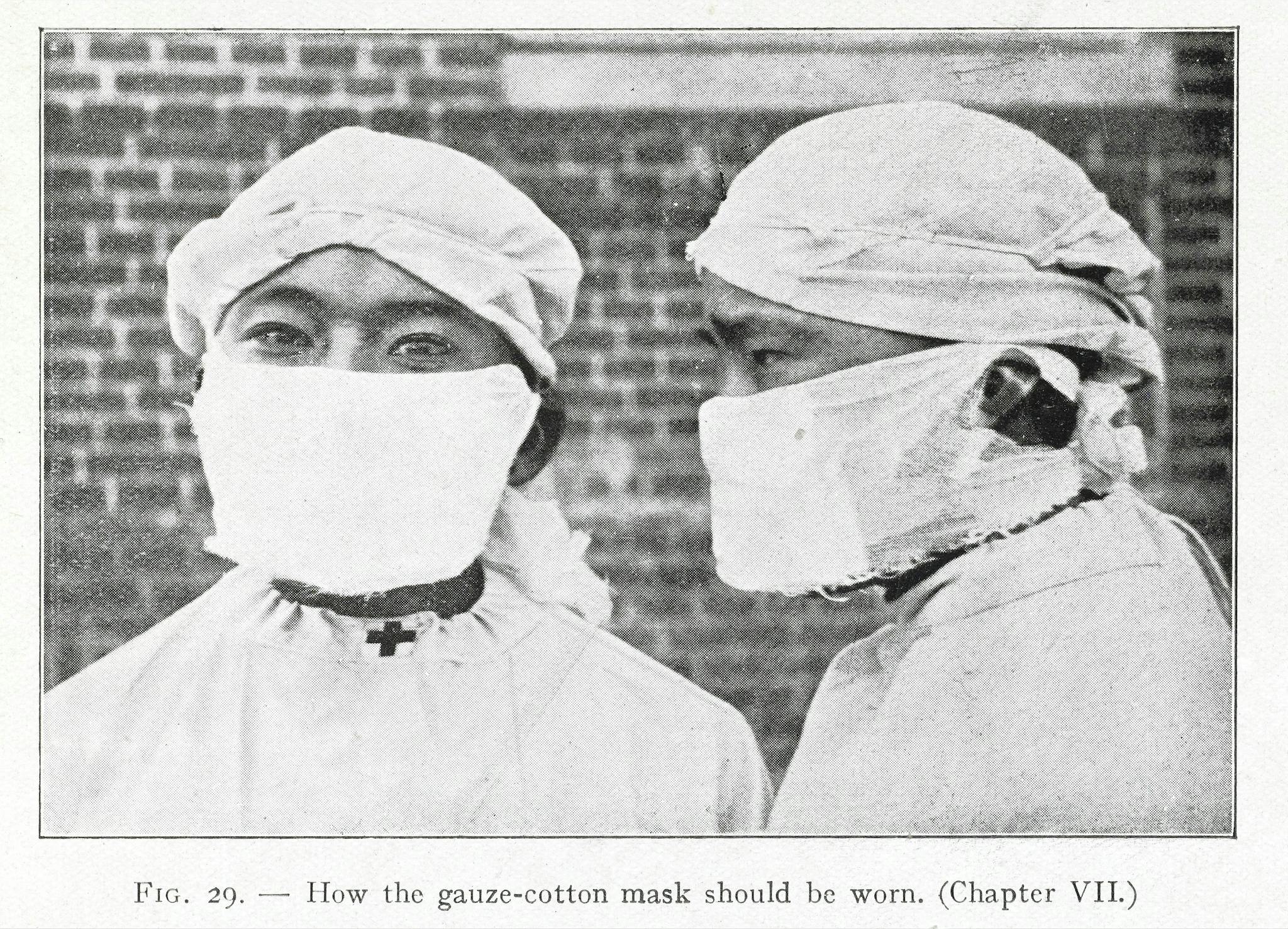
Using the article, “Protective Face Masks Through Centuries from XVII Century Plague Doctors to Current Healthcare Professionals Managing Covid-19 Pandemic” by Andrea Alberto Conti, I was able to learn about the important and detailed history of medical masks in the 20th Century. This article comes from the the National Library of Medicine and throughout this article it is pointed out that the scientific progress made both helped the general public as well as protecting medical professionals during pandemics. A notable person that furthered this progress is the physician, Wu Lien-teh who is shown above (fig.1). He further developed surgical masks that he already observed in the Western world during the Manchurian plague that occurred from 1910-11.

Through reading scientific articles about the history of medical face masks, I also came across. I must analyze the scientific progress that influences medical masks’ cultural practice and reasoning in the 20th century. Some of the first studies of the use of face masks occurred in 1918, with researchers finding that low infection rates were found in people who would use a cloth mask. These masks were used to protect healthcare workers from scarlet, fever, measles, influenza, and tuberculosis. In this project, I will analyze and present the cultural and historical context of the 20th century to create a better understanding for the reader about how medical masks played a significant role during the 20th century.

In the picture shown above, the physician Wu-Lien-teh is carrying out live experiments (fig. 2). After he already saw surgical masks in the Western world, he decided to make masks more solid and effective by adding layers of gauze and cotton to filter the air. This type of face masks was then manufactured on a large scale. Conti also discusses the 1918 Influenza pandemic and how medical professionals used masks at that time. Medical professionals during this pandemic started routinely wearing face masks to protect themselves and their patients. Then a year later, a man named George H. stated that the incidence of diphtheria contracted by the caregivers of sick persons could be significantly decreased if they wore facemasks of double thickness gauze and prescribed accurate sterilization techniques on the masks after each use.
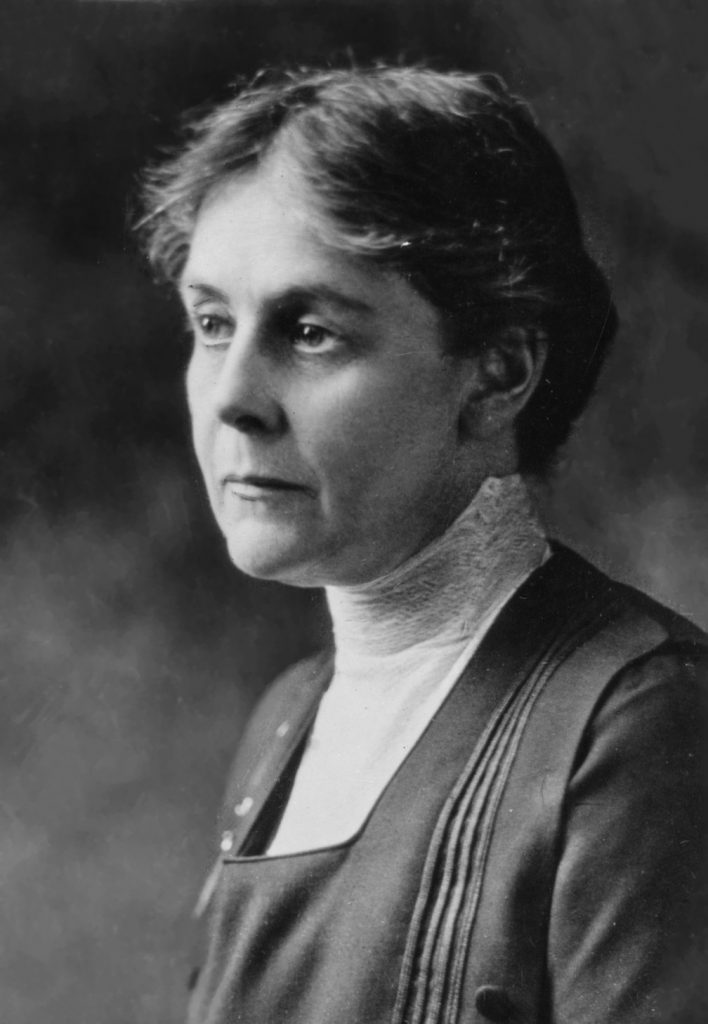
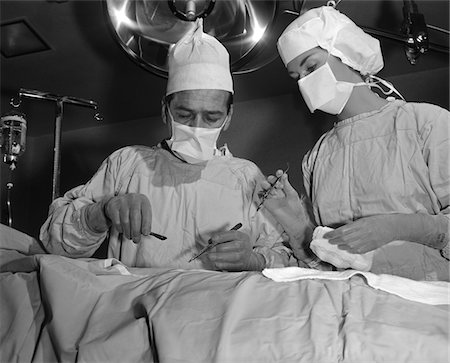
Another step was made in the surgical rooms when in 1937, J.S. Davis recommended that face masks should be worn by medical professionals, both over the mouth and nose as shown above with doctors and nurses practicing this essential precaution (fig.3). The article by MacIntyre and Chughati, “Facemasks for the Prevention of Infection in Healthcare and Community Settings” gave me insight into how early studies in the 19th century that first examined cloth masks were important in the study of disease control overall. The studies outlined in this article show that concepts of droplet and airborne transmission that are ingrained in common scientific practices have recently shown to be more complex that first thought. Masks were used to protect workers from scarlet fever, measles influenza, plague, and tuberculosis. As more studies were done on airborne illnesses and the more the scientific community understood these illnesses, reusable cloth masks became widespread during the mid-twentieth century, globally but was first used in Asia. The authors of this article declare that the current ideas about droplet and airborne transmission is based on outdated experiments from the 1950s, done using old equipment and it over-simplifies the complexity of pathogen transmission.
An article that I included comes from the American Medical Association by Alice Hamilton in 1905 as shown above (fig.4). This article named, “Dissemination of Streptococci Through Invisible, Relation to Scarlet Fever and Sepsis” is a primary source that I decided to use for it is scientific paper that outlines contemporary ideas and research that deal with the importance of droplets of sputum in the dissemination of various respiratory infections among medical professionals. It was found at the Memorial Institution for Infectious Diseases that one or two occurrences had suggested that streptococcus might pass from one patient to another, and that danger to other in the same ward. During April and May, 1904, an effort was made to prove whether or not scarlet fever patients actually disseminate streptococci into the air. The method started with petri dishes that were filled with rabbit’s blood agar which was used to catch droplets of sputum expelled from the mouths scarlet fever patients when coughing or crying or breathing heavily. The conclusion to this paper found that streptococci are expelled from the mouth in the invisible droplets of sputum by couching, speaking, whispering, crying, or breathing heavily through the mouth, at least at a distance of 36 cm.
The topic of medical masks in the 20th century as a research subject within a class that involves cultural products such as fashion, politics, and art brings my focus towards how people at the time saw medical masks within these aspects. My research goes into all these areas of culture, but it also analyzes the scientific community and culture within the 20th century. Living through the Covid-19 pandemic, it is important to look back a century to see how people reacted and perceived medical masks at that time to not only make the same mistakes, but also so we can build back better now with knowledge of scientists that have come before.
Masks reflected the development of progressive scientific thinking during the 20th century and scientific ideas that were developed leading up to the 20th century profoundly impacted history and culture onwards. In this project, I will analyze and present the cultural and historical context of the 20th century to create a better understanding for the reader about how medical masks played a significant role during the 20th century. The sources that I have chosen give an overview of the history of medical masks which comes in the form of noteworthy scientists, physical changes to medical masks, research, and experiments. I have also included primary sources for this project that come in the form of scientific articles, including one in the American Medical Association by Alice Hamilton done in 1905. Masks are part of fashion history and through this pandemic, the medical mask for some people has become synonymous with shoes or socks. Since medical masks become a part of contemporary fashion during times of pandemics or epidemics, we must analyze how medical masks during the 20th century were treated as such.


The article, “Effectiveness of Cloth Masks for Protection Against Severe Acute Respiratory Syndrome Coronavirus” was written by the epidemiologist, Dr. Chughati seen below (fig. 5). Here Dr. Chughati outlines the history and the development of medical masks in the 20th century while analyzing the cultural impact on the public and scientific community through different pandemics. During the century with each outbreak there was a push to find a better way to wear or build masks while there was still studies and research going on how masks play a role in preventing respiratory illnesses. Along with the the overview of the progress made within the medical community and the public, how to properly use and take care of medical masks is also shown within Dr. Chughati’s paper.
Within MacIntyre and Chughati’s article, the Manchurian Plague that occurred in 1910-11 that started along the Russian border of Manchurian in Northeast Asia is described in detail and shown above is a picture of a French publication covering the Manchurian plague. The pneumonic form of plague killed every person it infected. Most believed it was spread by rodents and the masks worn during this plague consisted of a four by six cm mask that secured over the mouth.
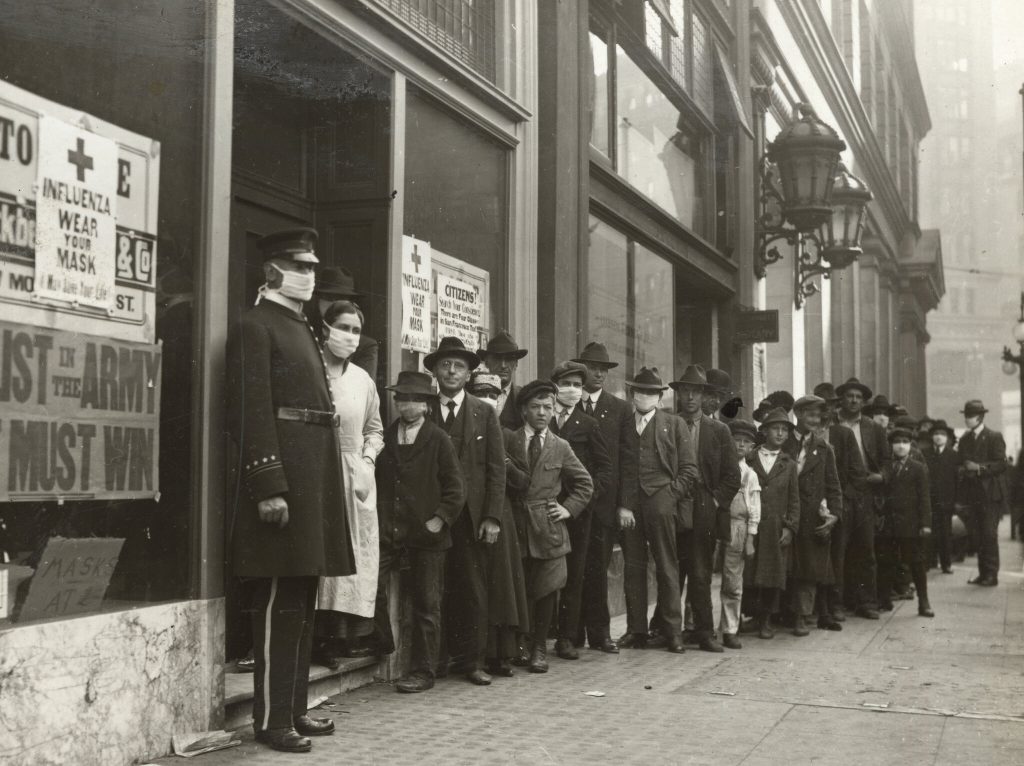
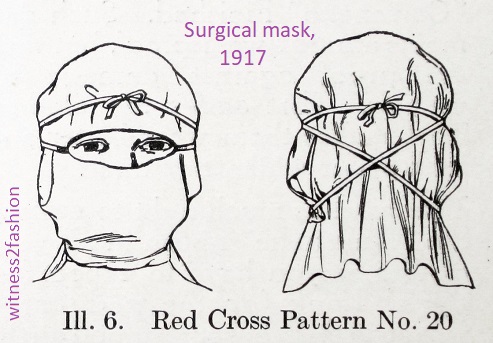
The Spanish Influenza brought worldwide hardship and halted everyday life. The illness did not originate in Spain, but since Spain was a neutral country in the first World War, so there was free media there covering the pandemic. The war added to the severity of the pandemic as soldiers’ immune systems were already weakened y war. People wearing masks during the Spanish flu are shown above (fig. 7).
An article that I have included as a resource for this project is by LB Quesnel, “The Efficiency of Surgical Masks of Varying Design and Composition”, where he takes five different types of surgical masks and tests them for their effectiveness of stopping airborne particles. The analysis tests different fabrics and different designs to find the best type of mask to use for medical and public use. The article by Shooter, “A Study of Surgical Masks” and the article by Matuschek, “The History and Value of Face Masks” are both articles from the National Library of Medicine that give an overview of how medical masks have been used since its inception. Another article that I thought useful to include is Strasser and Schlich’s, “A History of of Medical Mask and the Rise of Throwaway Culture”, where they go into detail about the use of medical masks in the 20th century, but also the consequences that disposable masks had on the medical community and the public during epidemics. (fig. 8)
The sources that I have acquired also go into detail about how to take care of medical masks, how they should be worn, and how one should go about handling them to reduce exposure to respiratory infections. Another aspect of medical masks in the 20th century is how masks evolved both in healthcare communities and in the public. The medical mask has changed form since its inception and the advancements that were made in the previous century results in a safer and healthier community of healthcare professionals as well as in the public as disposable masks emerged during the middle of the 20th century. From researching medical masks as both a piece of scientific and fashion history, the focus of this project is on the relationship between the scientific community and the general public to see the significance that medical masks have had in the past.
Bibliography
- Chughtai, Abrar A et al. “Effectiveness of Cloth Masks for Protection Against Severe Acute Respiratory Syndrome Coronavirus 2.” Emerging infectious diseases vol. 26,10 (2020): e200948. doi:10.3201/eid2610.200948
- Conti AA. Protective face masks through centuries, from XVII century plague doctors to current health care professionals managing the COVID-19 pandemic. Acta Biomed. 2020 Jul 16;91(4):e2020124. doi: 10.23750/abm.v91i4.10231. PMID: 33525231; PMCID: PMC7927518.
- Hamilton, Alice. (1905). Dissemination of Streptococci Through Invisible SPUTUM.IN Relation to Scarlet Fever and Sepsis. http://doi.org/10.1001/jama.1905.92500410032001g
- MacIntyre, Raina, and Abrar Ahmad Chughtai. “Facemasks for the Prevention of Infection in Healthcare and Community Settings.” BMJ: British Medical Journal, vol. 350, 2015. JSTOR, www.jstor.org/stable/26520626. Accessed 31 Mar. 2021.
- Pan K, Goel A, Akin LR, Patel SR. Through Plagues and Pandemics: The Evolution of Medical Face Masks. R I Med J (2013). 2020 Dec 1;103(10):72-75. PMID: 33261240.
- Quesnel LB. The efficiency of surgical masks of varying design and composition. Br J Surg. 1975 Dec;62(12):936-40. doi: 10.1002/bjs.1800621203. PMID: 1203649; PMCID: PMC7161878.
- SHOOTER RA, SMITH MA, HUNTER CJ. A study of surgical masks. Br J Surg. 1959 Nov;47:246-9. doi: 10.1002/bjs.18004720312. PMID: 14446158.
- Strasser, Bruno J, and Thomas Schlich. “A history of the medical mask and the rise of throwaway culture.” Lancet (London, England) vol. 396,10243 (2020): 19-20. doi:10.1016/S0140-6736(20)31207-1
(fig.3) https://dwvyw8kf1avne.cloudfront.net/s3fs-public/inline-images/07_1.jpg
(fig. 4) https://dwvyw8kf1avne.cloudfront.net/s3fs-public/inline-images/01_2.jpg
(fi.10)
https://mashable-evaporation-wordpress.s3.amazonaws.com/2014/10/Flu-epidemic-pair-1.jpg
Auto-Ethnography
It is strange and difficult to remember back to the beginning of the pandemic for it feels like we have always been living through a pandemic. At the start of the pandemic when most did not see Covid-19 as a real threat to our lives, but that quickly changed when the situation in the U.S. got worse resulting in students from all over the country being sent home. The moment people were told to return to home in the middle of the semester, was the time I realized that this virus would disrupt our lives in ways that most have ever experienced. After most people in Geneseo went home due to the pandemic last year, I stayed in my off-campus apartment to avoid going home to Buffalo which is a more densely populated area and also to reduce the chance of my family members at home getting the virus. It was not until the summer after that semester, did the CDC encourage the use of masks to reduce the spread of Covid-19. Quickly after the CDC’s recommendations and guidelines, did businesses and public places require that masks be worn. I remember using the blue medical masks when the guidelines were put in place to any public place or business that I would go to over the summer. When classes resumed in the fall semester of the following year, I remember that the school over the summer took action to fight against the pandemic by putting in medical masks dispensers and hand sanitizer stations all around campus. The steps that school took to combat the pandemic was to ensure that people were safe on campus so that students could continue with their education. These steps that the school took was also my first glimpse at how our education system and our government was going to deal with this pandemic. Along with weekly testing for the virus that SUNY Geneseo implemented, the school also provided students with personal hand sanitizer and reusable masks. Since I live near campus and I am occasionally there, I always have both the reusable mask and blue disposable mask on me at all times. The dark blue reusable mask that the school provided for students was a perceptive idea for the disposable masks as efficient and useful as they do pose an environmental threat as they are too often left on the street. When the CDC put mask guidelines into place, they were criticized for not putting the recommendation in sooner and that this hesitation produced widespread mistrust of face masks among the public. Even after the guidelines were put into place, it was recommended that since there was a shortage of face masks and medical masks that the general public should make their own reusable masks. The reusable mask that I use is a dark blue cloth mask that I got from the school which is made out of multiple layers of cotton woven fabrics. I chose to wear the reusable cotton mask so I do not have to constantly use disposable masks and these masks are more durable than the disposable ones. This idea of having the public make their own reusable masks was ideal because our hospitals and medical professionals at the beginning lacked the proper PPE as we saw stories on the news of nurses and doctors using garbage bags to protect themselves. I also saw stories of this phase of mask crafting being implemented as regular people starting making homemade masks for medical professionals as well their neighbors. Even after the shortage of medical masks, people still continued to wear their homemade masks or artistic masks that would throughout this pandemic be part of our fashion history. Spending my last year and a half through this pandemic and living at school gave me a firsthand experience how our education system decided to handle the pandemic. At the beginning of the pandemic, I was not sure what the school was doing was right or wrong because this was a new experience for me and for everyone. Whether or not students should be sent home was an important question, but the more we understood about this virus, the more we understood that what we all had to and sacrifice we would have to make was more than we all thought. It is important to look at how our education systems handle the pandemic for it is a sign and projection of how consequential the government and the people feel this pandemic is, which results in how long we must suffer through this tragic time. In the beginning, all of our institutions were not ready to handle a pandemic which includes our schools, hospitals, and businesses. However, after a slow understanding we began to put in place testing sites and eventually vaccination sites. Over the summer, schools all over the country needed students to submit a negative test result before returning to school, then they put in place a testing center on the SUNY Geneseo campus in Sturges hall where we would all get tested every week. At first the covid cases were on the rise and I don’t think people were ready to adjust to a school while being in a global pandemic. All of the steps that the school administration and the community took to combat the coronavirus allowed students to come back to school where some people may not have conditions at home that correspond to a suitable work environment. The access to masks, testing, and also vaccination also allowed everybody to have access to personal protective equipment as well as being comfortable to still have the opportunity to take classes on campus and online. Everything that was done to prevent the school from being overwhelmed by the virus was not perfect and there may have been things that may have improved the situation, but everything that was done was done to protect students and staff. As people around the country began to become more aware of the pandemic and get vaccinated, we see a decrease in the fashion trend of masks as people become more comfortable in the groups that they are comfortable with. I believe that the fashion trend of masks was one out of pure necessity and that people will stop wearing masks, even though wearing them would significantly decrease airborne illnesses in general.
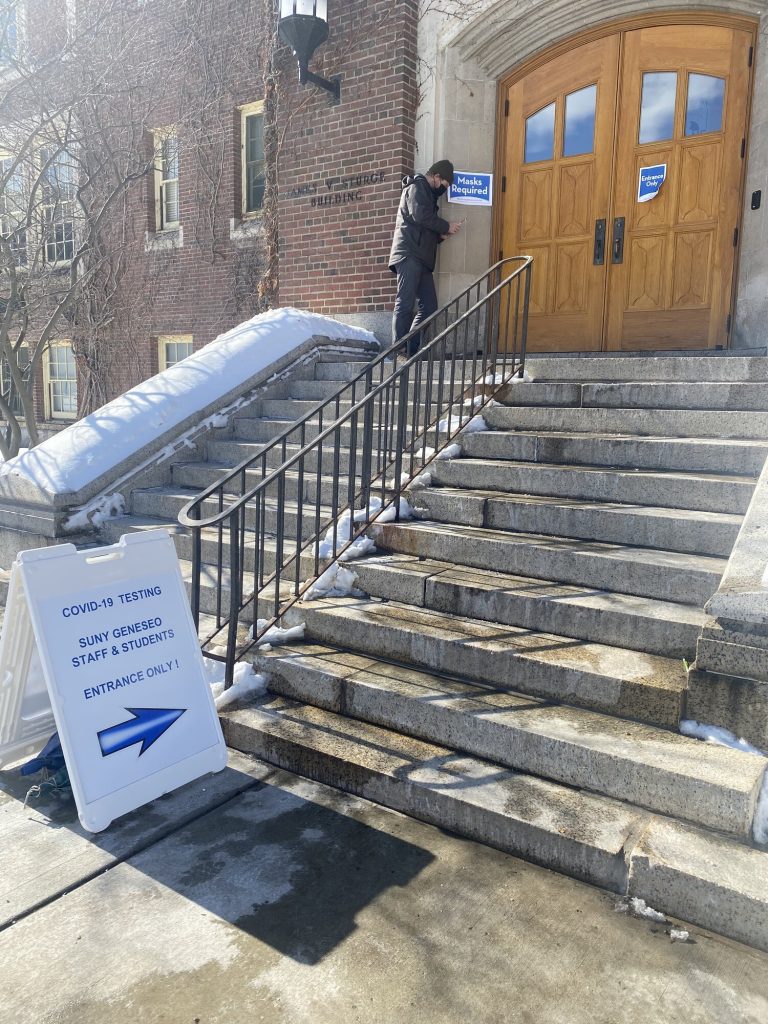
https://www.thelamron.com/posts/2021/2/17/covid-19-campus-update-in-response-to-an-increase-in-case-reporting
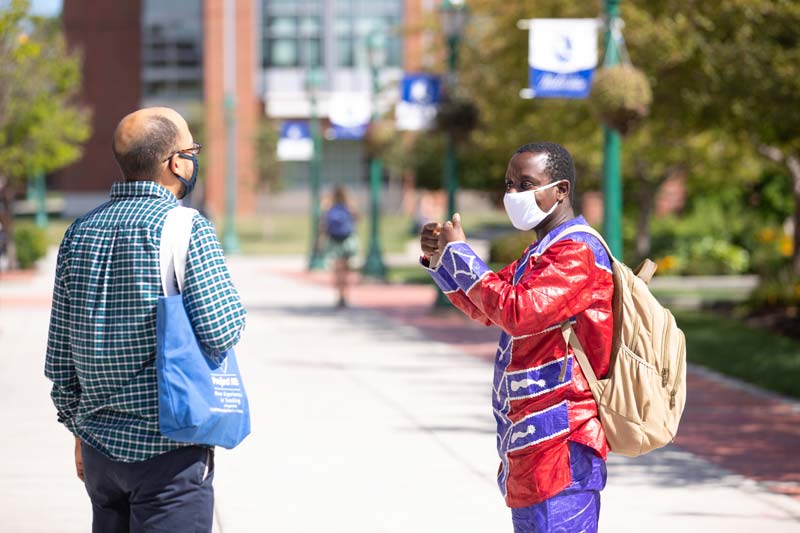
https://www.google.com/imgres?imgurl=https%3A%2F%2Fwww.geneseo.edu%2Fsites%2Fdefault%2Ffiles%2Fimages%2Femployees%2Fgeneseo-employees-covid-masks-campus.jpg&imgrefurl=https%3A%2F%2Fwww.geneseo.edu%2Fcovid&tbnid=66_RzYAcV6Ps3M&vet=12ahUKEwjqgcHw5qHwAhUKYK0KHYnoA6MQMygGegUIARDDAQ..i&docid=9g4KZUdI3KBmgM&w=800&h=533&q=SUNY%20Geneseo%20masks&ved=2ahUKEwjqgcHw5qHwAhUKYK0KHYnoA6MQMygGegUIARDDAQ
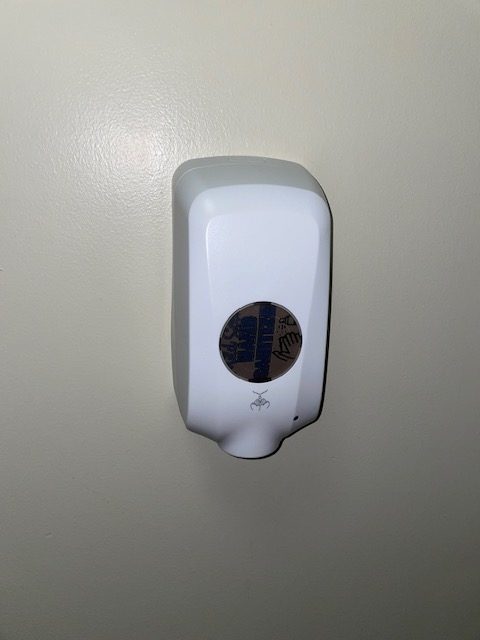
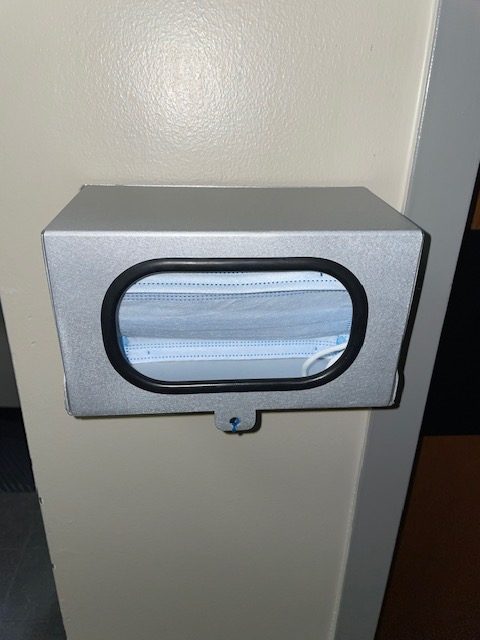
(fig.5) Picture of me gardening & wearing a mask
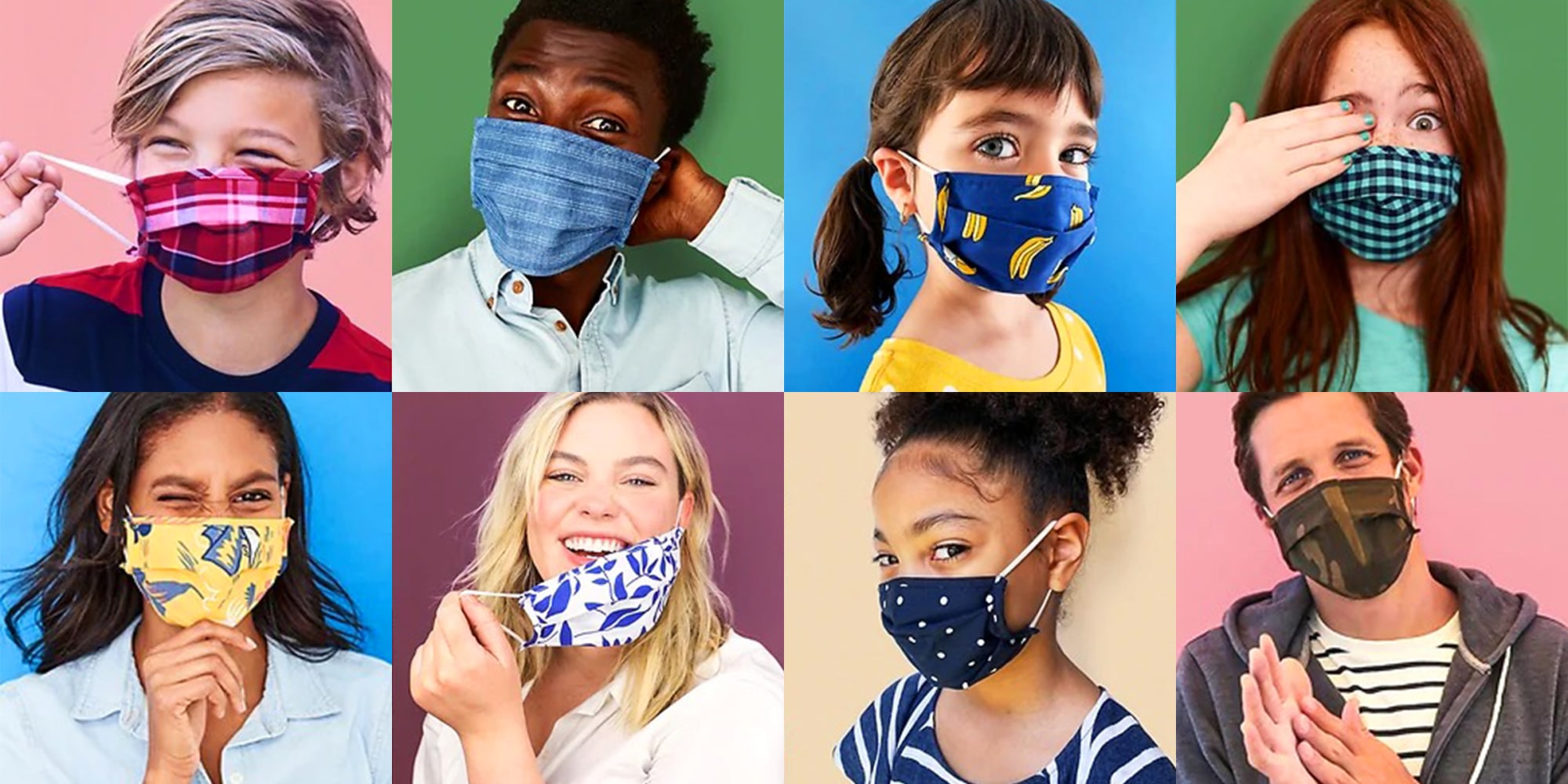
https://media3.s-nbcnews.com/j/newscms/2020_23/1575506/face-masks-give-back-kr-2×1-tease-200602_0deabbe43e91f6d2c539f0ceb52caee9.fit-2000w.jpg
Navigating Life in a Pandemic
Airiel Pearlman
Covid-19 has impacted our lives in so many ways and has forced us to think about how we operate in society. It seems fitting to chronicle and examine fashion and accessories and by extension masks and the role they have played in our lives as we navigate life in a post-pandemic world. While we are not entirely clear of the pandemic yet, the correct steps have been taken by handing out vaccines and having better access to Covid tests, as well as tracking. Masks have also changed greatly over the last year and throughout the second part of this paper, I will try my best to catalogue and narrate my experience with masks during Covid.

Back in December of 2019, I was in Spain for three weeks over winter break, and no one in Europe was concerned with masks. Even as Covid spread rapidly throughout China, no one in Europe was worried; it was simply another international headline that no one thought would reach the level it did. When I returned for spring semester in January of 2020, I still had no idea how much Covid would impact my life, I was only going about my regular day to day life; I had work, ski practice and school. I had never worn a mask for health reasons until Covid.
The day that things changed for me, and I suspect many other people was Monday March 9th, 2020. There were many cases of Covid sprouting up from the Manhattan and downstate near New York City and Long Island. I was at work when I received a text from my Mom in our family group chat. She was frantically texting everyone that she was trying to buy some masks at Target, but they were out. Later that day, Governor Cuomo announced that students in the SUNY system who were studying abroad would be called to come home. A few days later, he would announce that all SUNY campuses would be shut down for two weeks, and that deadline would only keep being extended. I ended up going home to Rochester, where my Mom and younger sister helped me move out on one of the designated days that campus had set up. It would be two weeks later when I would finally be able to get my things, and the statewide mandate that everyone wear masks would go into effect shortly after quarantine began.
Like most people in quarantine, it was difficult to find a mask at first. Because it was March and still cold for the most part, whenever I left the house, I would wear a ski mask that was a neck warmer, and I would also wear a bandana. My family did not get our hands on medical disposable masks until the end of March, early April. I have inserted a picture of me wearing the first mask I received (Figure 1). I tried to wear it as long possible, it became stained with my make-up and foundation. I was trying to be resourceful, and I think I was considering the only time I left my house was when I would drive around with my younger sister just to get away from the rest of our family.
The first cloth/fabric maskI bought was in June from target when more masks were in supply and being circulated. It did not have a wire to go around your nose, and because of the size discrepancy I had to buy a child’s mask. Either Target did not understand the size of people’s faces or I have the face size of an eight-year-old. My family and I often teased each other about the cheap and ill-fitting masks we would come across, or if we were unlucky, there were masks we bought thinking they would fit.

One such mask for me was another one I got from Target. It said it was an adult small, and my sister and I had ventured out into the world in the middle of June, it was right before my birthday. We bought a two pack of masks that were an adult small, thinking they would fit us, but we were sorely mistaken. The mask I had wanted was a tan, taupe color with white floral designs on it. It had an adjustable nose wire and loops to go around my ears. The moment I put it on, it hung well below my chin. I had thrown away the receipt, believing it would fit and, but I was mistaken. My sister’s mask did not fit any better than mine, so we went home to see if they would fit my parents or younger brother, and to no one’s surprise they did not fit. We ended up donating the masks that did not fit to people who needed them much more and did not have the money to go out and buy masks as regularly as my family did. One of the more sobering moments for me during the pandemic was realizing how fortunate my family was in regard to financial security during the pandemic.
As the months of quarantine wore on, I decided to invest in a mask of my own because it was August and the pandemic had been around for much longer than anyone had anticipated, my wardrobe had started to adapt to wearing masks all the time. For instance, one of the biggest changes that I went through was not wearing large hoop earrings or my cartilage piercing for some time because the loops of my mask would always get caught and snagged on my piercings. It was just easier to not wear earrings at all, so I wore studs or nothing.
Another large change that I had not truly realized I had adapted was my make-up routine. As I mentioned before, in the first masks I wore my foundation would rub off leaving my mask stained. Between having to re-wear masks and the humidity of the summer months, my skin suffered breakouts because of the masks. I began not wearing any foundation, and then not any setting powder and then it came to not even any concealer. Slowly over the summer I became confident in going bare faced out in public and on zoom calls. I was working from home remotely, as many of us were relegated to during those long-quarantined months. During department meetings where we were highly encouraged to have our camera on as part of ‘team building’ as my boss had described, I would not have any make-up on.
Even now, a year into the pandemic, I have opted to continue my minimal make-up routine. It mainly consists now of a bit of concealer, eyebrow gel, mascara, and a bit of blush. My skin has never been clearer, and my confidence has grown leaps and bounds. One of the biggest lessons that I have learned throughout this pandemic is that I have to enjoy every moment to the fullest, not because it could all end, but because I have the opportunity it to enjoy it.


Masks as Punishment in the Middle Ages
By Christine Grace
In the late Middle Ages, civility and individual identity were based around the dichotomy of shame and honor. Laws throughout Europe were established in order to diminish the honor of the criminal. In Germany honor was a part of social capital, as it was customary belief that the entire community would suffer as the result of one person’s shameful actions. Individuals were born with a certain amount of honor based on the social class they were born into, as the natural hierarchy was determined by God himself. It was possible for individuals to lose honor by committing shameful acts such as crime or marrying someone of poor status. People feared shame because it meant that their honor would be ruined and life could not be lived normally without having honor. Even just by associating with shameful people by sitting at the same bar as them, an individual may diminish their honor. There were even laws in place that protected craftsmen from shame when they would build gallows, the more craftsmen there were on site the less shame would come to them. Laws provided that crime was punishable by increasing shame.
The Germans in the late middle ages believed that crime committed by one person would infect a whole community with shame. Therefore, punishing criminals was done so that damage to the community’s honor would be restored. Criminal punishment was not focused on reforming the criminal, but rather to deter other crimes by making an example out of the criminal. Punishments which decreased honor did so by increasing shame and had to be done publicly, as their success was based on the public’s reaction. It was expected that the public would gather at the pillory to take part in the punishment by throwing rotten vegetables at the criminal as a way of cleansing the community. Punishments were always public, as their success was determined by the reactions of onlookers. Shame is only effective when punishment is public.

Punishments intended to dishonor the receiver were typically visual and used symbolism. The masks had mortifying designs such as donkey ears, a pig’s nose, or a freakishly long tongue. The mask might have an enormous nose to indicate the woman wearing it is nosy. Other masks had huge eyes, ears, or mouths to indicate the crime of the wearer was eavesdropping, spying, or spreading gossip. Generally, the masks were given as a punishment to talkative women. Some masks came with a chain attached so that the wearer could be led through the streets as a spectacle. The masks were often made of cold, unyielding metal that were heavy and uncomfortable.
Shame masks in Germany were called schandmaskes. They were used as a punishment throughout the middle ages up until the eighteenth century. Shame masks were nearly exclusive to women. The crimes they were designed to fit were gossiping and nosieness, crimes usually associated with women. Not only were the masks extremely uncomfortable, but they would even have a mouthpiece to add injury to insult. The iron mouthpiece pressed down on the top of the tongue and usually would have a spike or blade that would pierce or even lacerate the tongue, causing the person wearing it extreme pain if they moved their mouth to talk or eat. The mouthpieces of the masks would physically silence the wearer. Because the mouth piece placed pressure on the tongue, this would often lead to excessive drooling or mouth fatigue. The wearer would oftentimes be pushed into the stocks and made a town spectacle. In the stocks the wearer would be subjected to taunting, mocking, and rotten tomatoes. Some variations of these masks would make whistling noises when the whistler exhaled which added to the humiliation.
In England and Scotland during the same time period, the masks were called the Scold’s Bridle (or the Brank). They were used on people for the same crimes as the schandmaskes and even extended their purpose as punishment devices for being excessively rude, rash, or shrewd. The masks were most often used on women as a punishment in the form of public humiliation and torture, men were not subjected to the Scold’s Bridle nearly as often as women. The psychological trauma and physical pain of the Schandmaske and the Scold’s Bridle was used as a means to subjugate and control its victims so that they literally could not speak or share opinions. People were intimidated into submission by this device. Punishing and ridiculing criminals was the legal and systematic way of controlling people’s behavior, in most cases, the behavior of women.
The nature of the crime was always made clear by the Scold’s Bridle or the schandmaske, spectators could tell the reason for the punishment just by seeing the design of the mask. Although these devices were worn over the face and head, the identity of the wearer could not be hidden. Even in big cities everyone knew who it was under the mask. People either asked or were told who it was. Ironically, even though gossip was a punishable crime, it was acceptable as a way to spread information regarding who it was wearing the mask.
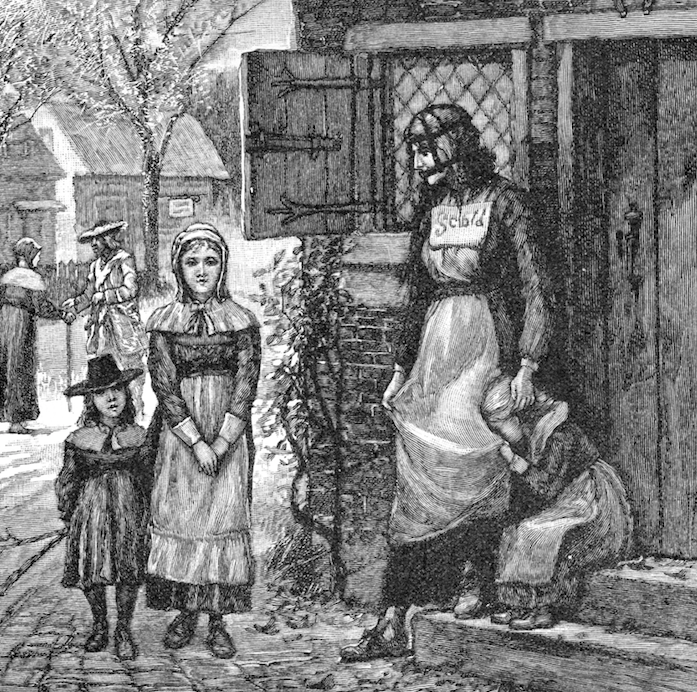
During the middle ages in Europe there was an increase in the anxiety and fear relating to the “unruliness” of women’s speech. Part of the reason for this was the circulation of texts thanks to the printing press. There was a lot more access to the written word which intensified fears of women speaking outside the boundaries of domesticity. Acceptable, moral, and honorable feminine behavior specifically discouraged reading printed texts. Despite this, the Middle Ages saw an explosion in women writers. Women’s speech was suppressed artistically and judicially at the same moment that the written word became widely accessible. At this point, the Christian-Judeo beliefs were widespread as the Catholic Church ruled over the legislative and punitive laws in most of Europe during the Middle Ages. With the circulation of the written word of God printed in the Bible, the popular notion regarding women’s speech was that women, as the descendants of Eve, need guidance in their speech because Eve lied to Adam which ultimately caused man to be expelled from the Garden of Eve. Hence, gossiping and evil speech were one of the greatest sins. The goal of these masks was to enforce cultural norms during the time in which they were used.
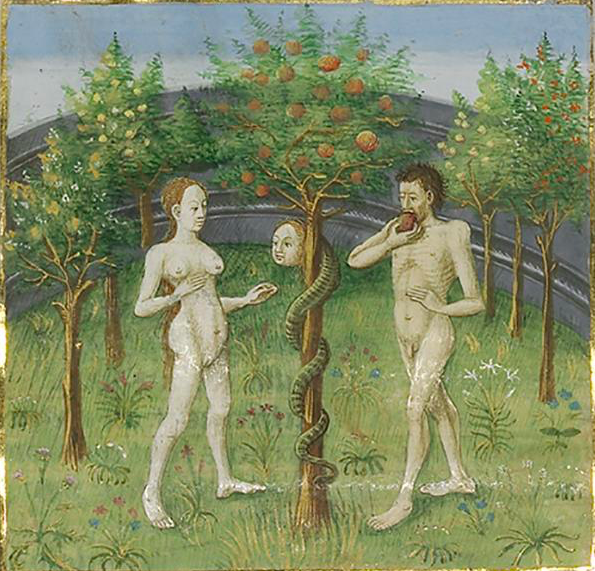
Under the doctrine of the clergy, corporate punishments were issued to criminal acts. The suffering of the body is fundamentally bonded to the Christian religion. During the Middle Ages, gossiping was akin to everyday life and social interaction. To have marks and scars from corporal punishments increased the shame, people with lasting defects received ongoing ridicule even after the punishment ended because onlookers can identify how such defects are possible. For instance, if the wearers of the schandmaske or the scold’s bridle were to speak and the device lacerated the tongue, that person would be marked by their punishment making their shame all the more impactful on their lives. Not only would the wearer’s speech be impeded, but they would also likely face being ostracized by the community and receive little to no protection. People marked by corporal punishments sometimes were banished entirely from the town. Corporal punishments were the worst for the poor. Because they already had little or no money, all they had was their honor which would be diminished severely increasing shame. Rich people were fortunate enough to sometimes be able to pay off their anti-social behavior instead of facing punishment.
Schandmasks and scold’s bridles were used as a means to control people’s behavior by intimidating them. Shame masks were intertwined with the idea that women’s speech in particular was problematic and in need of subjugation, as it was women’s speech that doomed humanity in Genesis. The masks were a solution to a contemporary affliction.
Bibliography
“Medieval Masks of Shame.” Museum of Artifacts, 1 Jan. 1970, https://museum-of-artifacts.blogspot.com/2017/02/medieval-masks-of-shame.html
“The Mask of Shame.” Torture Museum, torturemuseum.net/en/the-mask-of-shame/.
Lidman, Satu “Shame as a Means of Punishment.” Research Gate, January 2001, https://www.researchgate.net/profile/Satu-Lidman-2/publication/265283058_Shame_as_a_Means_of_Punishment/links/584dcd8408ae4bc8993310aa/Shame-as-a-Means-of-Punishment.pdfIdelson-Shein, Iris. “The Schandmaske, Silence, and Mame-Loshn.” In Geveb, 30 Aug. 1970, ingeveb.org/articles/the-schandmaske-silence-and-mame-loshn.
A College Student History on Wearing Face Masks
Mikayla Marowski
The Early Stages
When the pandemic first took place, it was a hectic flow of uncertainty and fear of contracting the coronavirus. During this time, masks were directed to be worn by all members when leaving their house and entering buildings outside the home. I remember being quarantined at home and told not to leave the house unless it was for essential travel but that if the travel was essential then to wear a mask as a protection from the germs and to help stop the spread of the virus. I was sitting on my couch when the news broadcasted that these new face coverings were about to be stapled in everyday wear for, they were required to be worn in all businesses. When we first found out about having to wear these face masks, I had very mixed emotions. For these were seen as something that could protect us from the virus, but I questioned whether these face coverings were actually helping, as every day I would watch the news to see what stores had cases of corona and how people were still contracting the virus even with wearing a mask. This is how I spent most of my days, I didn’t leave my house for the first month or so and had no interest in leaving other than to go for walks around the neighborhood at night. When I finally decided it was time to wear a mask and get out of the house, this was around the middle of April. It was either leave the house and join civilization or I was convinced that my brain was going to make me go insane by having the same people interactions every day.
Leaving the House
Upon leaving the house, I wore a blue medical mask, one that my dad had brought home a box of from being an essential worker. Truly, the only mask at the time I thought would prevent me from catching the virus because was the same mask that medical professionals were wearing. This was around the time that my neighbor was making masks and distributing them to the neighbors, but I connived that these masks were not going to actually protect me from the germs. It was a wonderfully made mask with multiple layers, but the fear distilled inside me prevented me from ever wearing the mask. However, it is interesting to see the change in the masks that I went from wearing at the start of the pandemic to now. I went from being so paranoid that I would only wear the blue medical masks for months of the virus. I even came to school in the fall not owning a single reusable mask. My parents loaded me up with boxes on boxes of those little blue face masks. While I did wear them for a long time, I started to see more people wearing the reusable masks and not contracting the virus, my apartment roommates had never even worn one of the medical masks and only wore reusable ones.

The Reusable Mask
As more brands came out with a variety of different designs and face coverings, I decided it was time to finally buy reusable masks. The first reusable masks I bought were 3 packs of the Athleta activewear face masks. I was amazed at all the different colors these masks came in and read great reviews on how comfortable they were. Being someone who is always active, I wanted a mask I would be able to breathe in and continue to be active while wearing. I wore these masks for the majority of the fall semester, buying new ones periodically but sticking to this brand or wearing the blue disposable medical masks. It was not until this semester that I chose to venture out and buy from a beloved brand different than Athleta and chose to invest in the Lululemon workout face masks.
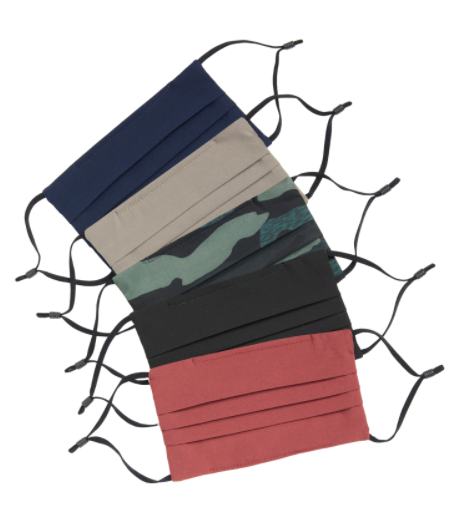
Athleta Mask 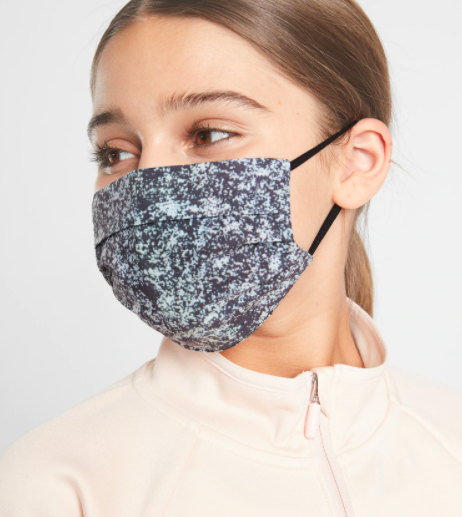
Athleta Mask Worn
The Lululemon Mask
The double strap face masks came in a pack of three and retained for $28 from the website. I wanted something that wasn’t going to constantly fall down while I was talking or working out and these did just the trick by having the loops that go completely around the head and neck. The material of the mask is similar to the rest of the workout clothing line material, the body of the mask being 56% nylon, 44% lycra elastane and the straps being 91% nylon and 9% elastane. The color of my mask being shown is a black camo mask, with alternating shades of blacks to create the camouflage pattern. The mask also has the logo of the company as a reflective silver print on the left side corner of the outside of the mask. The mask was created by the Lululemon brand yet was not something that the company offered until after the pandemic had taken place. This object was made for the pandemic and created solely as a marketing tool to show that face masks should be worn by all customers shopping within the stores. While the purpose of the object is to completely cover the mouth and nose, while wrapping around the face for more of an air-tight feel, preventing the germs from entering or leaving the mask. The object is factory-made and one that is created in a large quantity to be mass distributed. The stitching of the mask going down the bridge of the nose and mouth, then around the edges of the mask to keep it on tight. While the straps also being adjustable for the purpose of having a size that fits all, while also having a stretch to the material that moves with the mouth. While most face masks have the metal bar at the top of the mask to keep the nose piece up on the face, this mask however does not have any metal or plastic bar built into the nose. Instead, the mask seamlessly wraps around the face and the strap that is shorter is meant to go around the neck, this is how the orientation of the mask is determined. The object is also part of a group of masks that the company has come out with, these being the original face masks but the company coming out with another face mask more recently since the pandemic has started. What makes this mask unique is the matter of how it is able to be worn while still being active, the effect that the mask is not being worn while still having to wear the mask for as to how skin like the mask feels on the body. This mask would be one that sparks the eye of other mask wearers and creates a conversation for the unique design and sleek material.
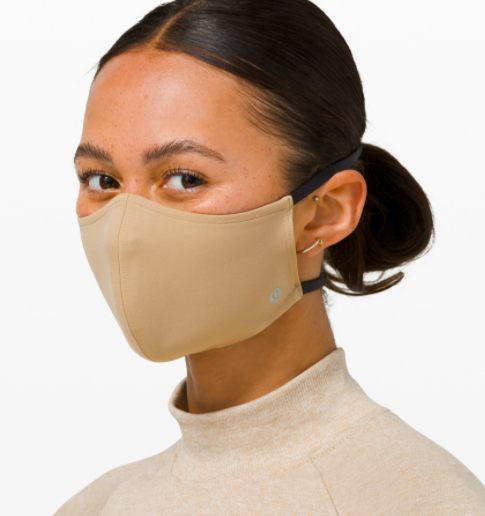
Lululemon Mask Worn 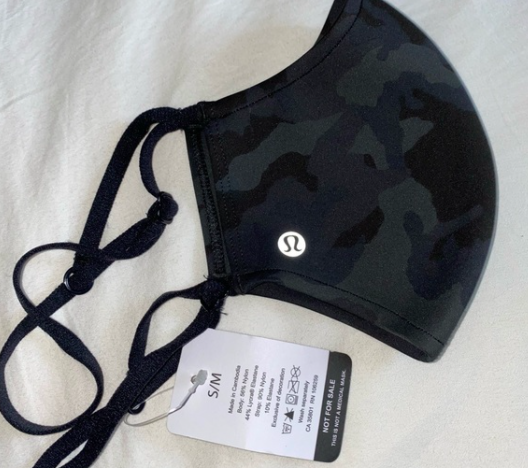
Camo Lululemon Mask
Contemporary Fashion and Masks
Mikayla Marowski
While COVID-19 caused a spike in the use of face masks, making face masks an essential part of everyday life, masks were actually seen being worn for both medical and contemporary fashion purposes before the spike of the virus. Face masks are typically worn for the purpose of medical use, mainly seen being worn by those who are sick but can also be used to prevent the spread of an illness to others or to keep sterilization in medical practices. These face masks were not used for contemporary fashion purposes, most of the masks seen worn for medical masks and did not seem to follow the idea of being worn for look purposes but had a goal of safety. However, while masks were used before COVID-19, the question arises as to whether or not people will continue to wear face masks and if the goal will be resulting in medical purposes, as use of contemporary fashion or continuing to create face masks that still fit the fashion industry standards while keeping those around us safe from illnesses.
Masks Before COVID-19
The idea of contemporary fashion is fashion that is easily accessible to be both worn and purchased by almost everyone with a minimal budget. This is key for the usage of face masks during a pandemic in which businesses and state officials are requiring patrons to wear a mask in order to stop the spread of the virus. The rise in face masks created a window for the fashion industry to create a new item that was both fashionable and capable of serving the purpose of safety. A window that many companies did not have before and has been seen as an opportunity to create a rise in sales. For some companies, the fabric being used to make clothing was turned into the same fabric to make face masks, even seen as matching the outfit to the mask. Although, most clothing companies were not making face masks from the fabric before the pandemic because there was not a need for the product. The spike in the pandemic created a need for these masks, whereas, before the pandemic, most people did not express a need for wearing a mask, let alone one that fits contemporary fashion. However, face masks before COVID-19 were popular mainly in Asian countries, where those of all ages would wear face masks to keep themselves and others safe from things as simple as a common cold, to more severe viruses. These masks were not seen for contemporary fashion, seemingly having no evidence that these masks were used for fashion purposes at all but rather to keep others from catching an illness. There is a divide however between face masks for medical purposes and face masks for fashion. Especially before COVID-19, most masks did not fully cover the mouth, rather covering the eye area and if they did cover the mouth, were not designed to keep germs in the mask and the germs of others out. It was commonly seen that contemporary fashion fit more of the eye mask look, typically seen at parties and events where the identity was made to be kept secret by the mask and was also seen as being used throughout history. Masks, before COVID, were seen worn as a way of keeping out pollution in the air from entering the lungs. These masks are typically seen in cities where the pollution is high and some made to fit the look and appeal of contemporary fashion, as to how these masks were designed to be purchased by vitally anyone. Masks have been cycled through the fashion industry for years, these masks may not be the typically considered mask that is up to code, covering the nose and mouth completely, for the pandemic but masks were still seen as a part of contemporary fashion before. In the fashion industry, it is always changing, especially when it comes to contemporary fashion. Typically seen of following the trends, and this is what the fashion industry experienced with face masks and will experience with face masks after COVID.
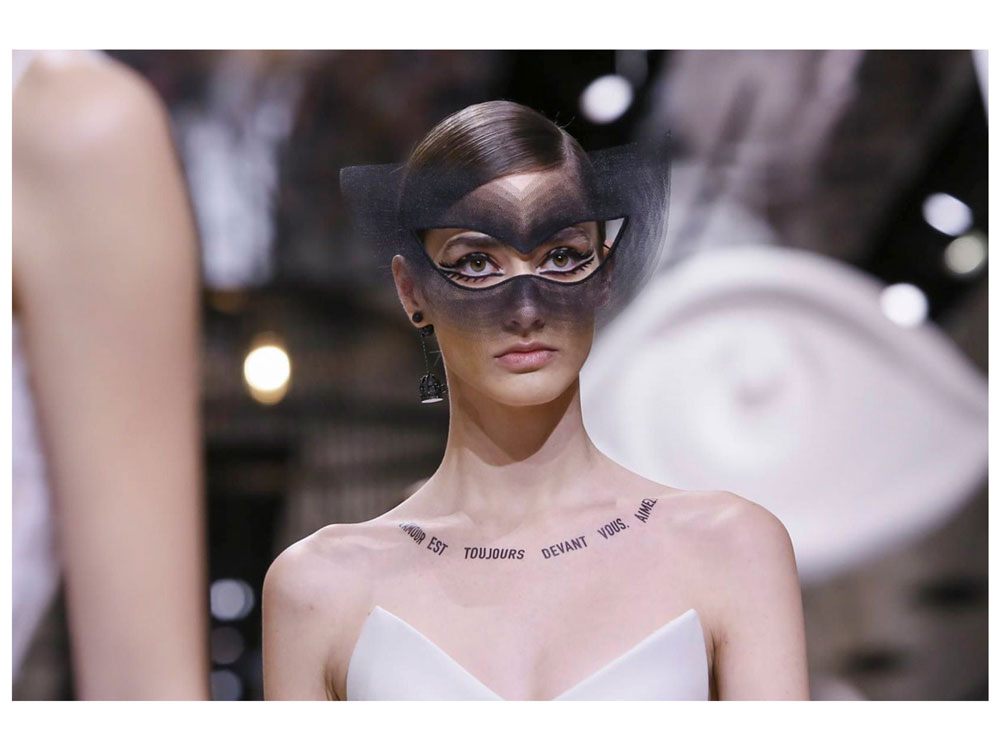
Fashion Masks Used Before COVID-19 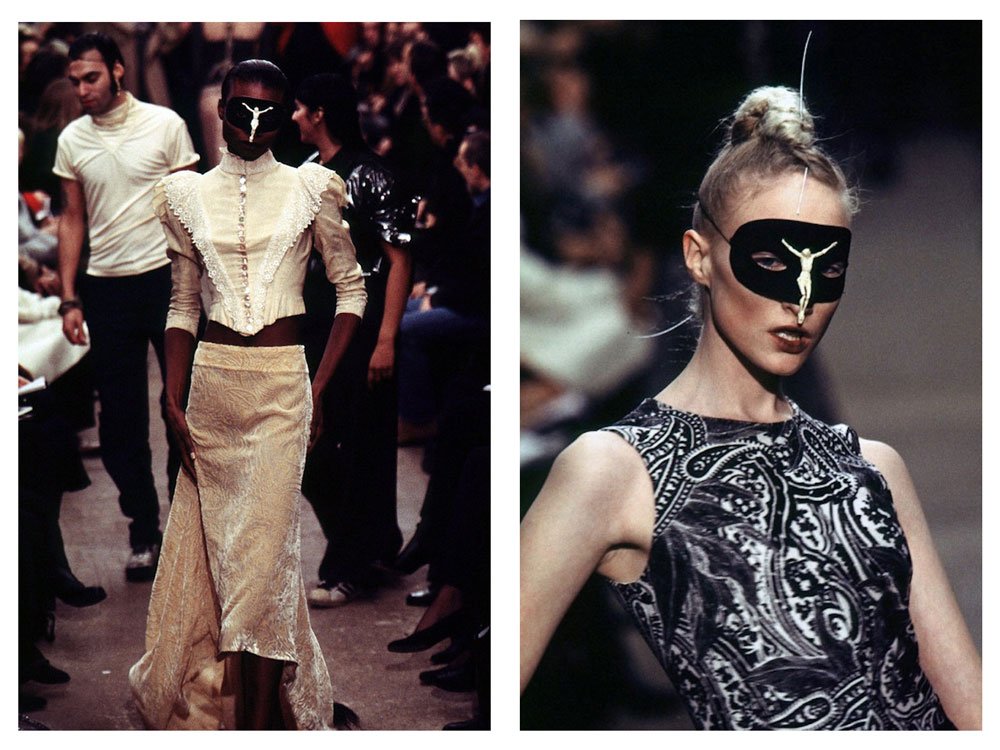
Eye Mask Before COVID-19 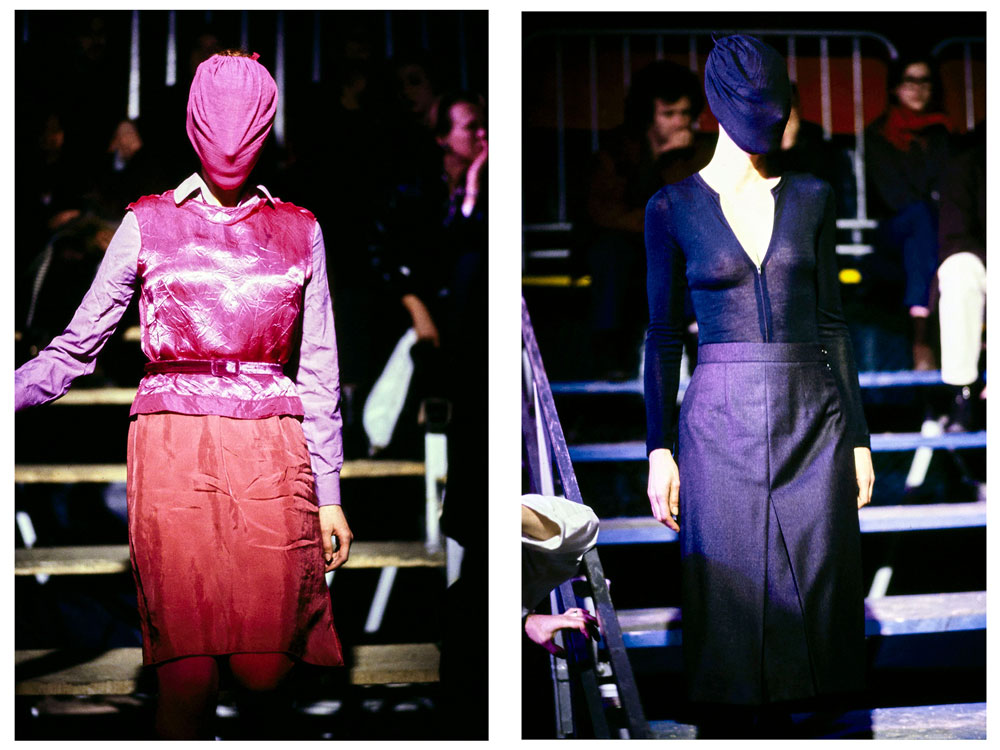
Full Face Masks Before COVID-19 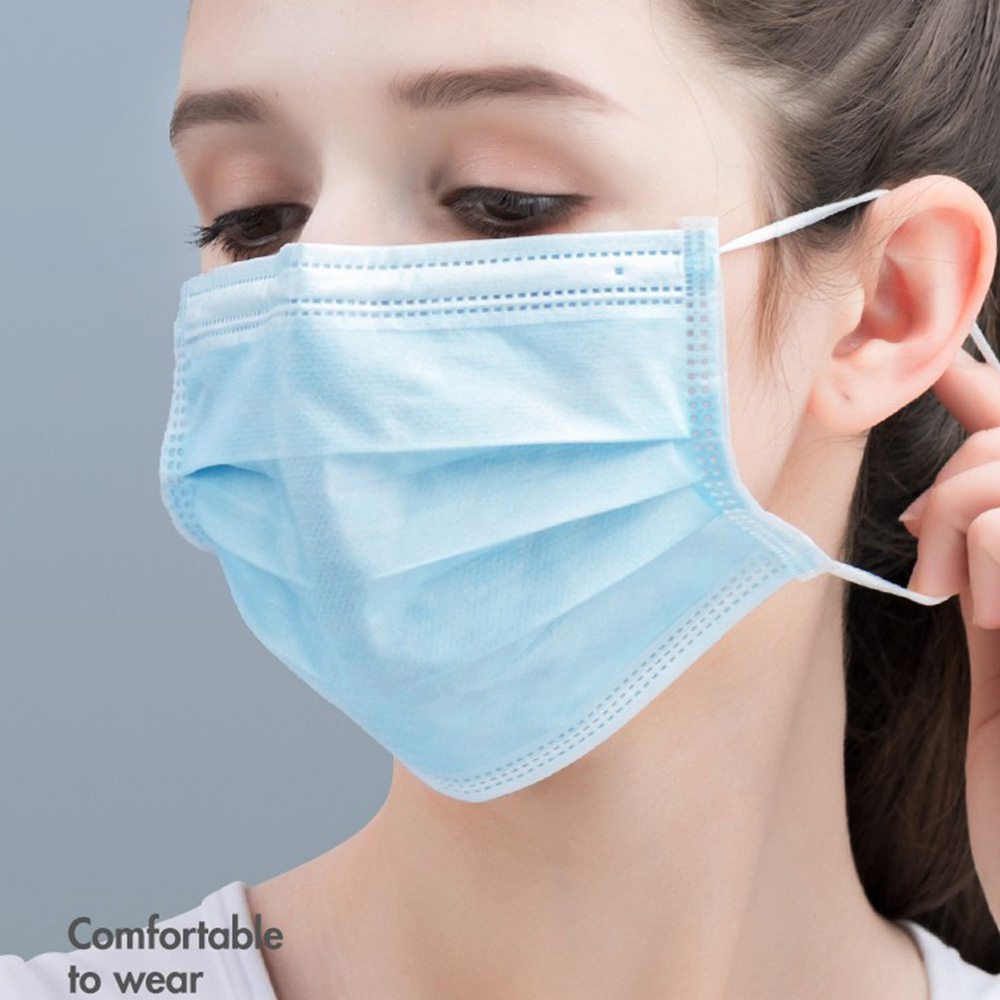
Medical Masks Used Before COVID-19 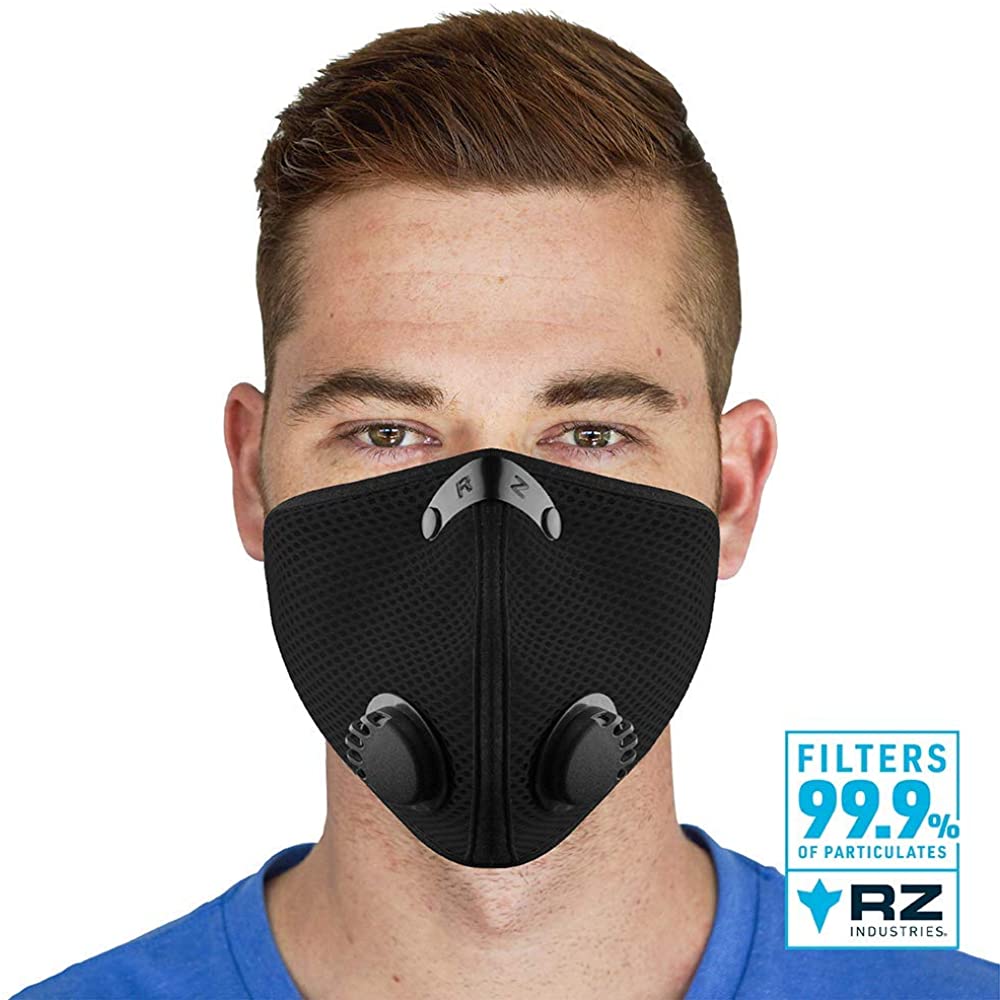
Air Pollution Masks
Masks After COVID-19
However, while face masks were not as much a trend, but a necessity, the ways in which the fashion industry glamorized these masks created a fashion trend. Creating masks of all colors, ones that would match outfits and ones that were even seen as statement pieces. Although fashion is always cycling back to the trends and patterned looks from previous years, it is believed that face masks will do the same. While it is understandable that most will not want to wear a mask after the long period of being forced to wear one or that some people will continue to wear a face mask for medical purposes, face masks had such an impact on the current generation that it would not be out of the ordinary for the face masks trend to be seen from designers after the pandemic ends. These masks would be capable of fitting both fashion standards while also protecting people from things like the flu. Masks after the pandemic have the potential to show the care in others, that if one is feeling unwell then a mask would be worn, similar to how Asian countries were operating before the pandemic. It is projected that companies, non-medical, will continue to make face masks after the pandemic and the need for face masks to be worn has ended. Face masks will be less likely to be seen as ones that solely cover the eyes, as seen before but rather to cover the mouth and nose. This is something society has already experienced from before the pandemic to current in the state of the pandemic, where more research is creating a change in the face mask development. Creating a fashion industry adaptation, as the masks will change over time to fit the needs of the public. Due to these changes, can be safe to assume that as technology and the fashion industry develops and more knowledge regarding the pandemic is obtained, the face mask will evolve over time. Changing to be more effective for the purpose of medical needs and changing to fit the standards of fashion. It is true, however, unknown as to whether face masks will still be relevant in the next few years, taking into account after the pandemic and if these masks will still be worn. Although, based on the information being released currently, masks will still have an impact in years to come.
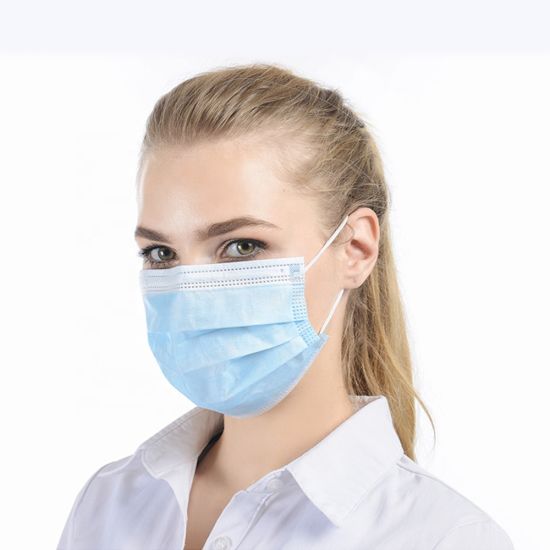
Medical Mask 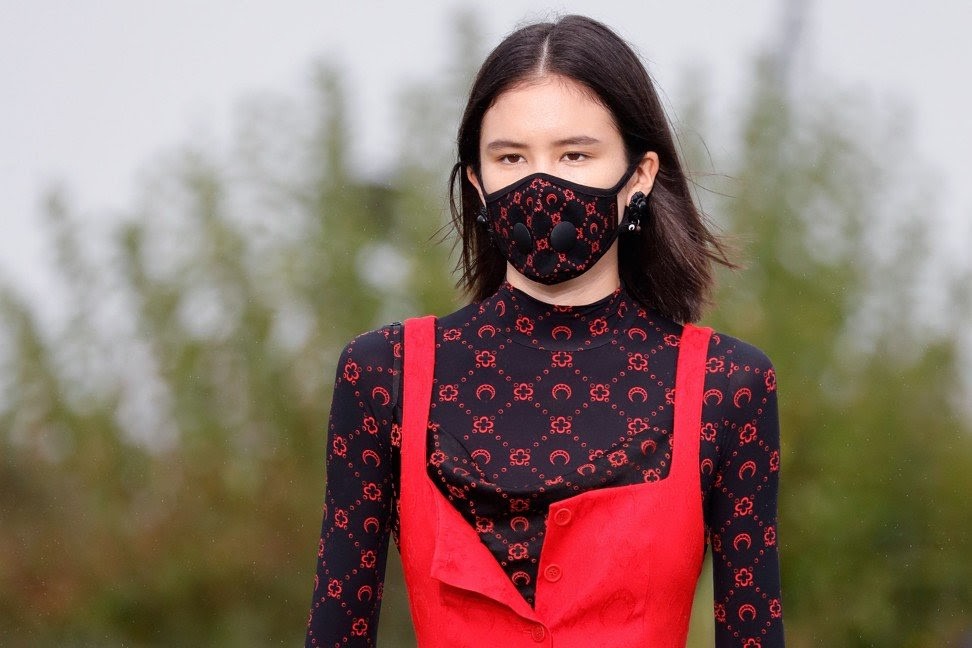
Mask to Match Outfit 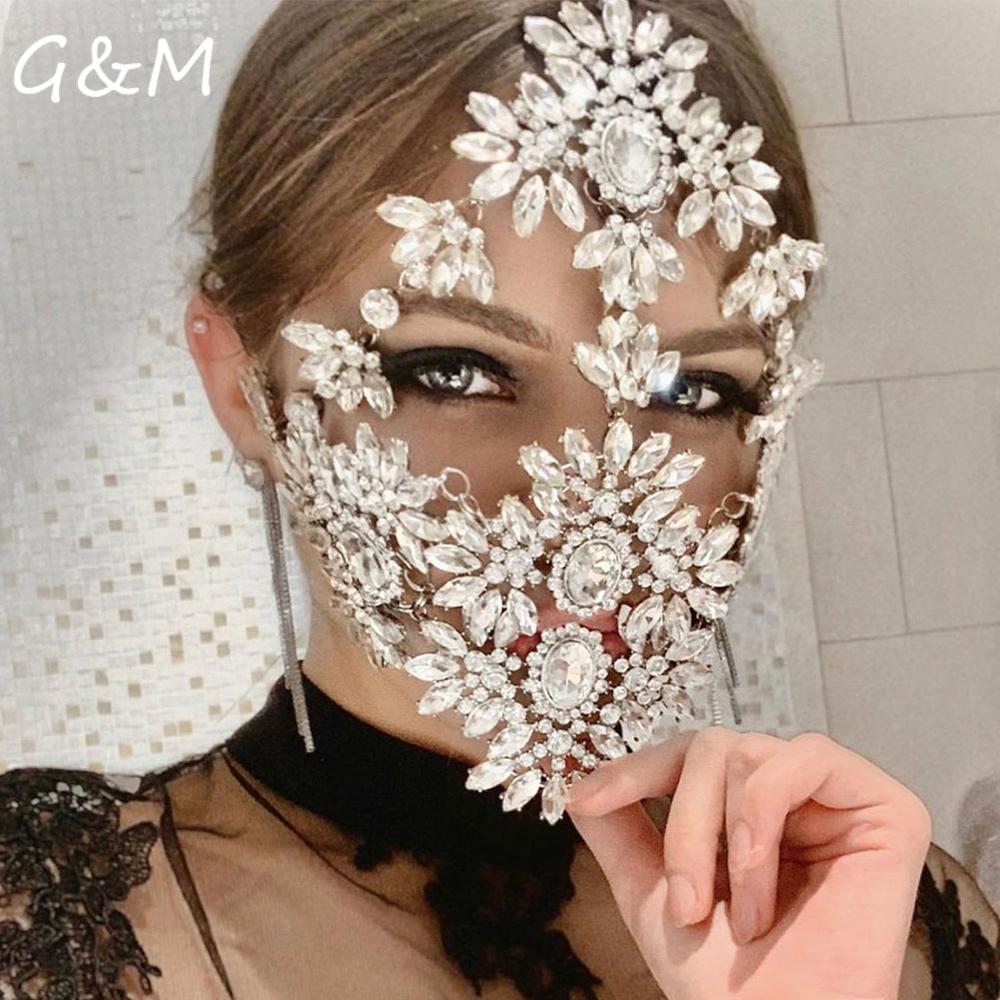
Mask Used for Fashion 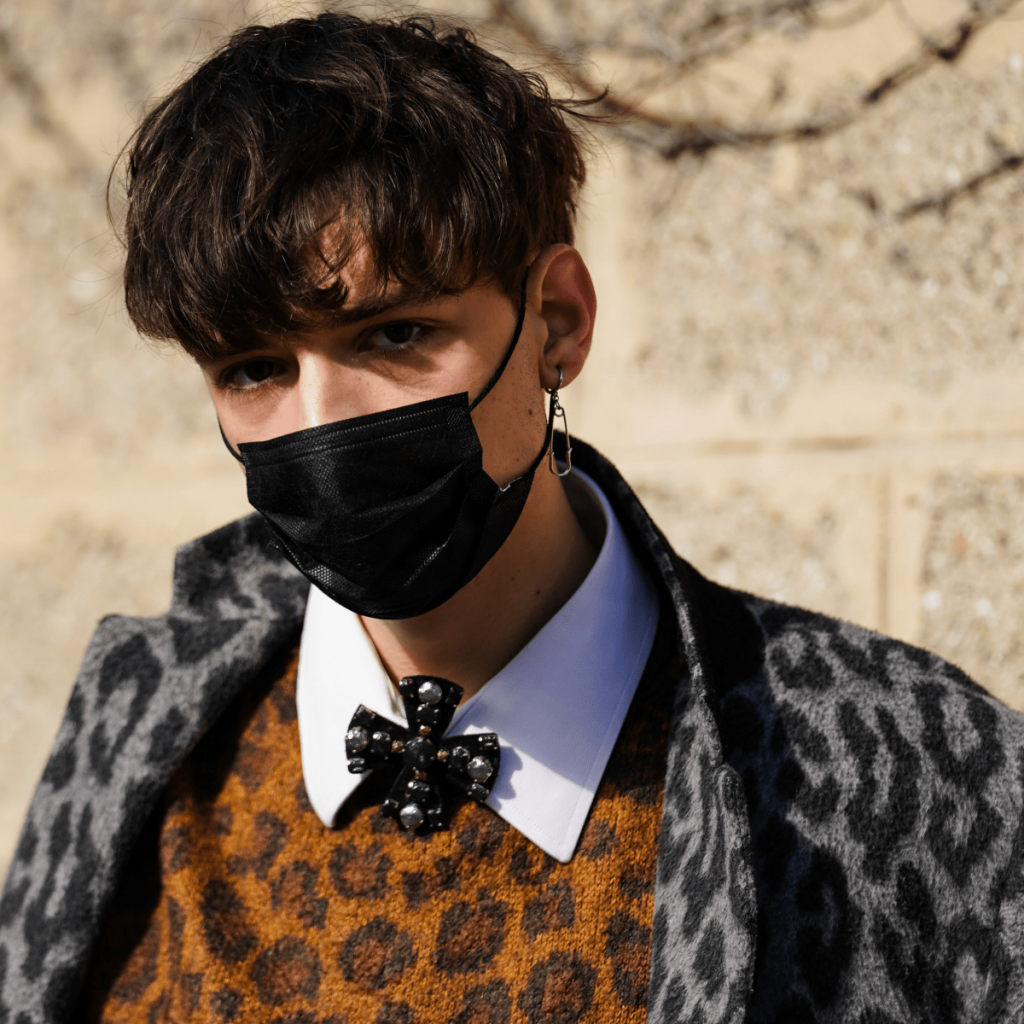
Disposable Mask 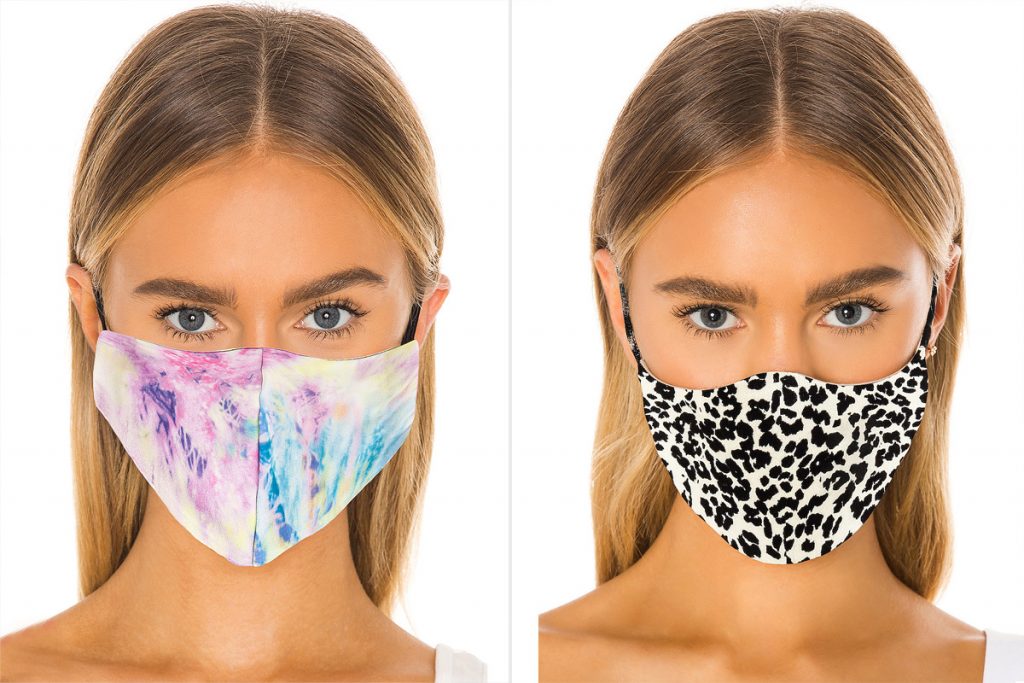
Contemporary Fashion Mask
The Use of Masks
While masks come in all shapes and sizes, designed for different areas of the face and for multiple purposes, it has become abundant that with the pandemic, the fashion industry will continue to see more face masks that revolve around covering the nose and mouth areas even after the end of the spread of the pandemic. However, it is unclear as to how the pandemic will end and if masks will stay or go away completely but with the research of masks being popular before the pandemic, it can be assumed that masks will still make an appearance in the fashion industry after the pandemic. With this, the population can expect to either see a cycle of face masks returning into the fashion industry or an item that will be permanently placed on the shelves for the useable future.
Works Cited
Best high fashion face masks throughout history. (2020, August 25). Retrieved April 14, 2021, from https://enfntsterribles.com/high-fashion-face-masks-throughout-history/
Connie Wang, S. (n.d.). When fashion met face masks. Retrieved April 14, 2021, from https://www.refinery29.com/en-us/2020/09/9987092/fashion-face-mask-covid-style-trend
Ducharme, J. (2021, April 02). Should we keep wearing masks even after the pandemic ends? Retrieved April 14, 2021, from https://time.com/5952051/masks-after-pandemic-ends/
Lowndes, L. (2021, February 22). Fashion forward: The past, present and future of masks. Retrieved April 14, 2021, from https://depauliaonline.com/52605/artslife/fashion-forward-the-past-present-and-future-of-masks/
Roaring 20s: Fashion WORLD Predicts Post-covid boom. (2021, January 31). Retrieved April 14, 2021, from https://www.theguardian.com/fashion/2021/jan/31/economists-predict-post-covid-fashion-boom
Wong, B. (2020, September 21). Why east Asian countries were wearing Masks long Before COVID-19. Retrieved April 14, 2021, from https://www.huffpost.com/entry/east-asian-countries-face-masks-before-covid_l_5f63a43fc5b61845586837f4
